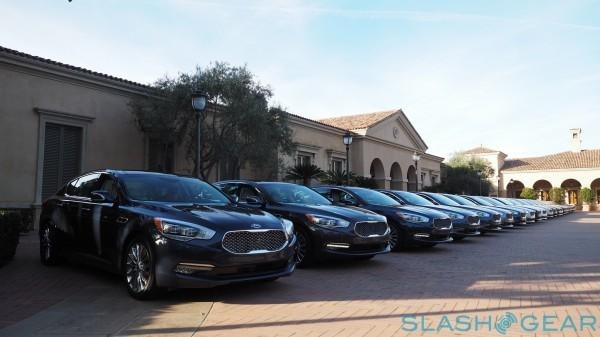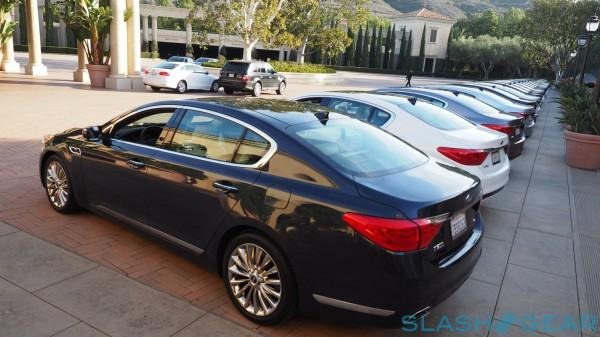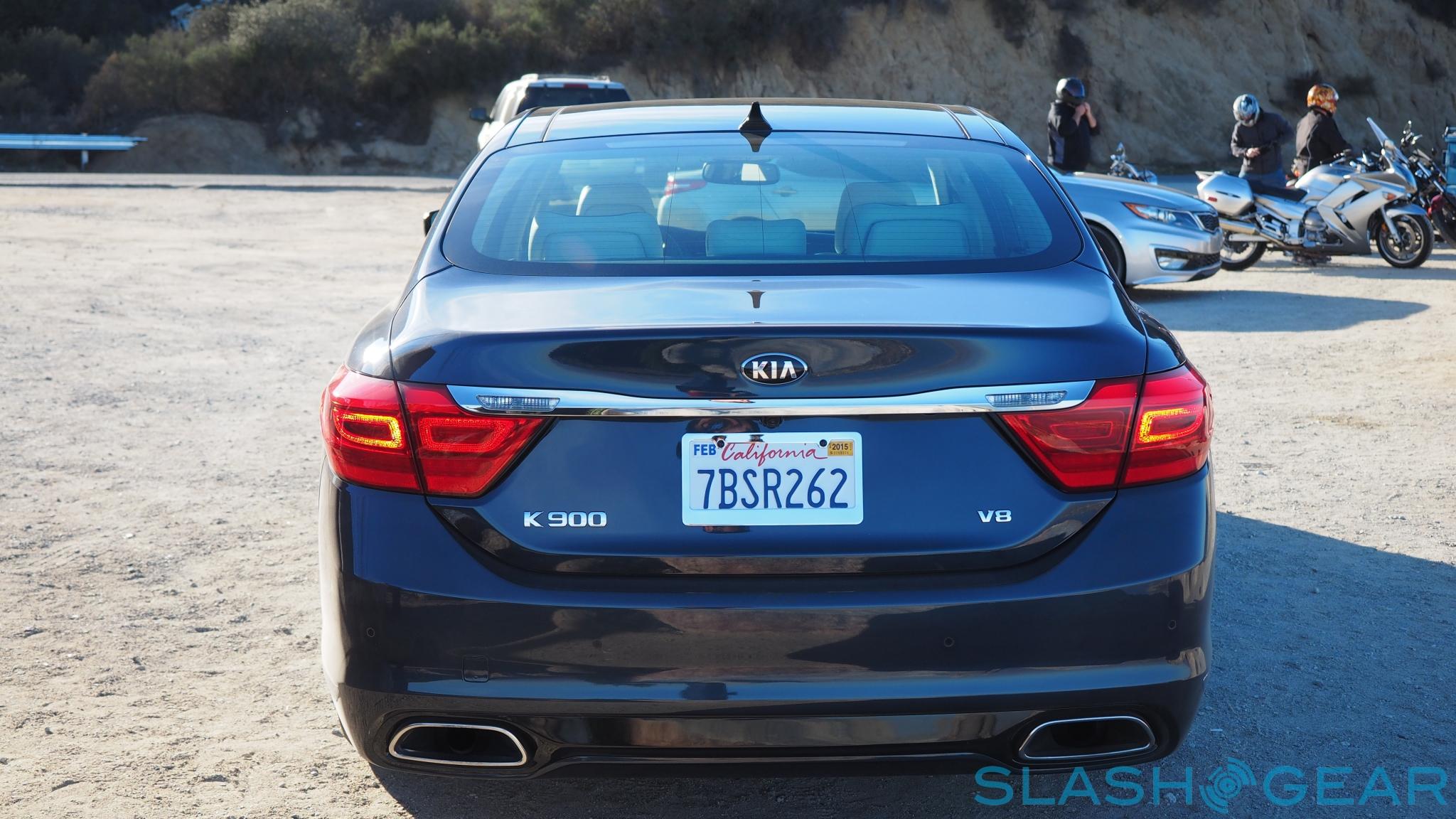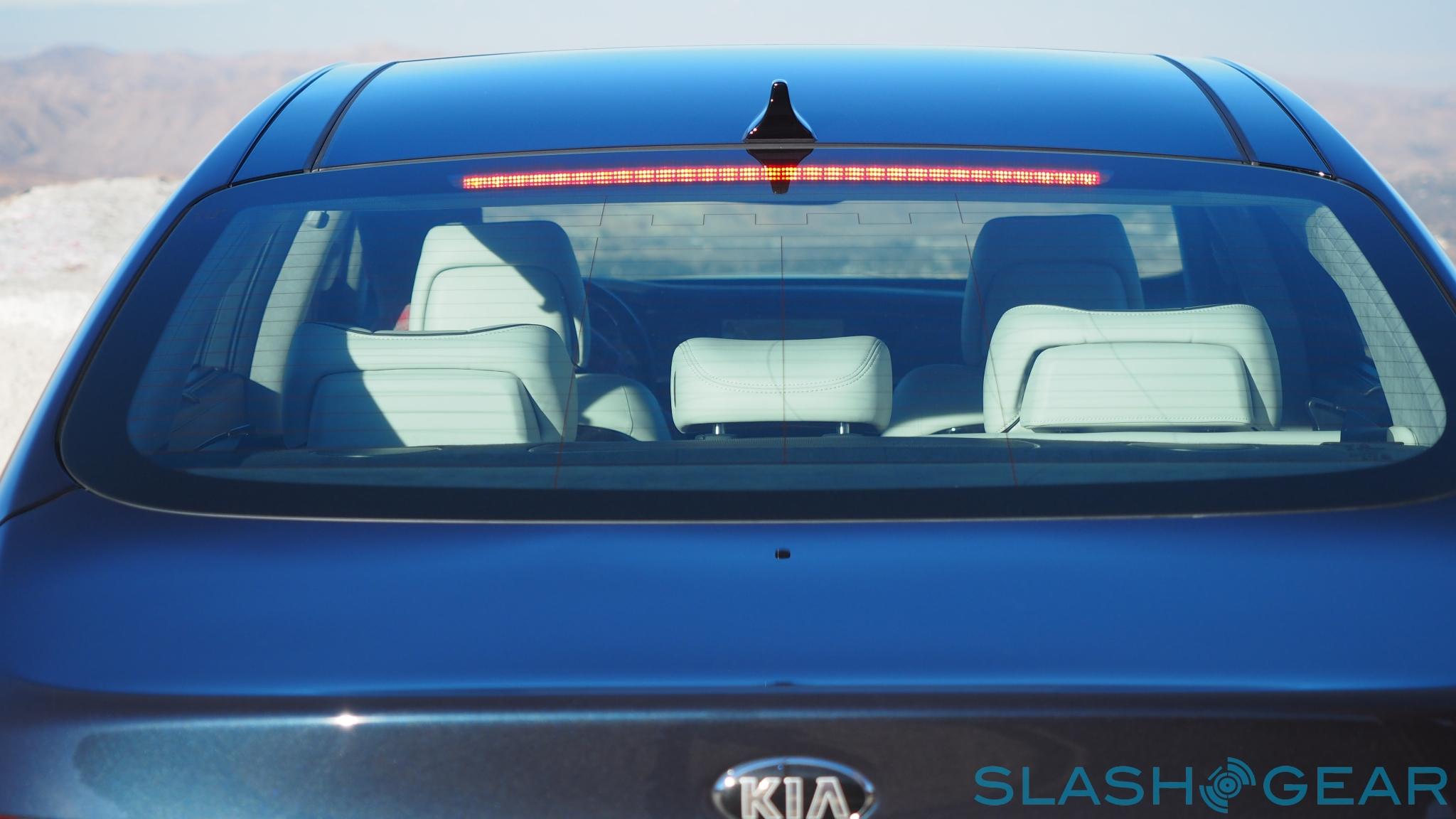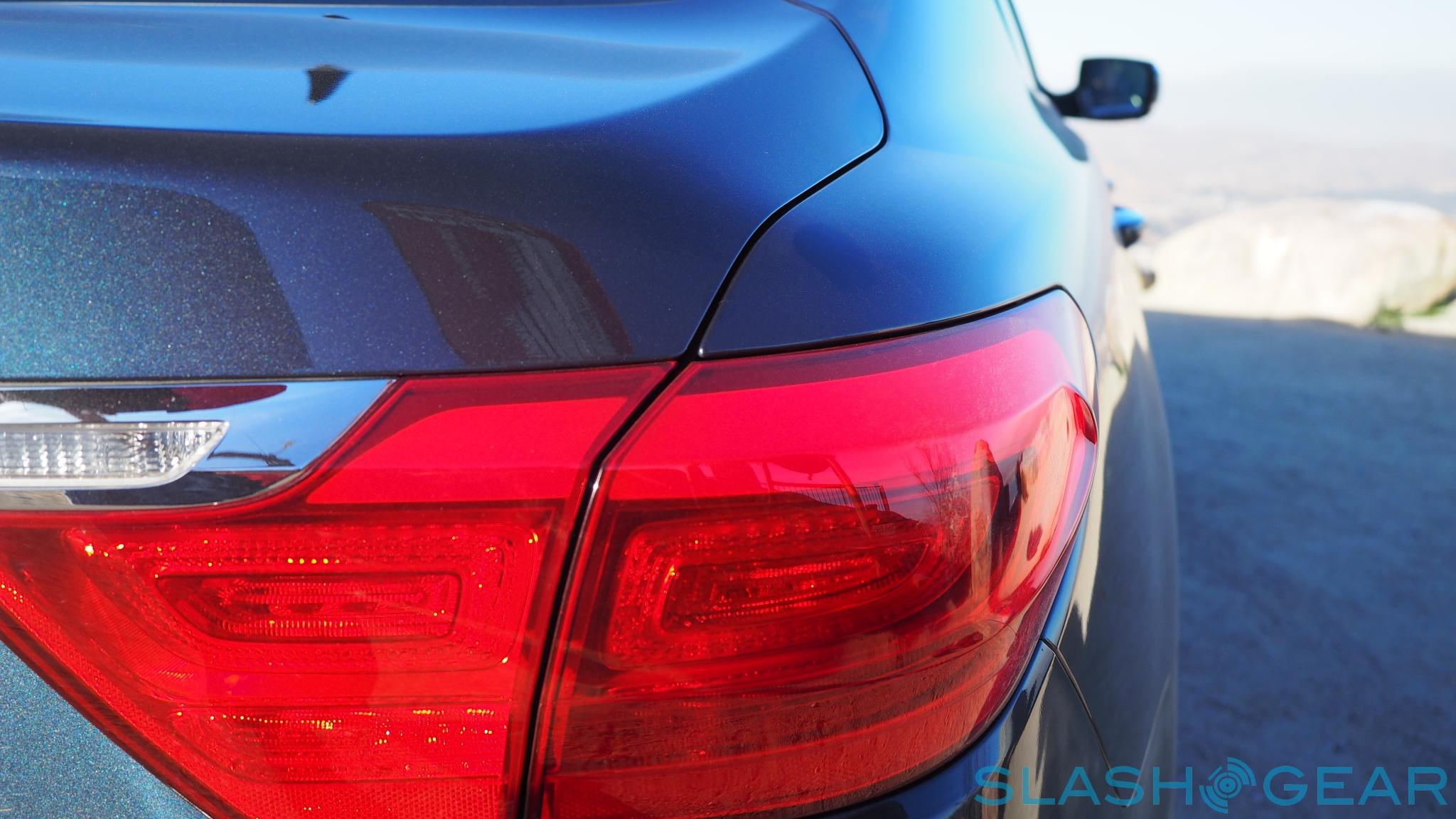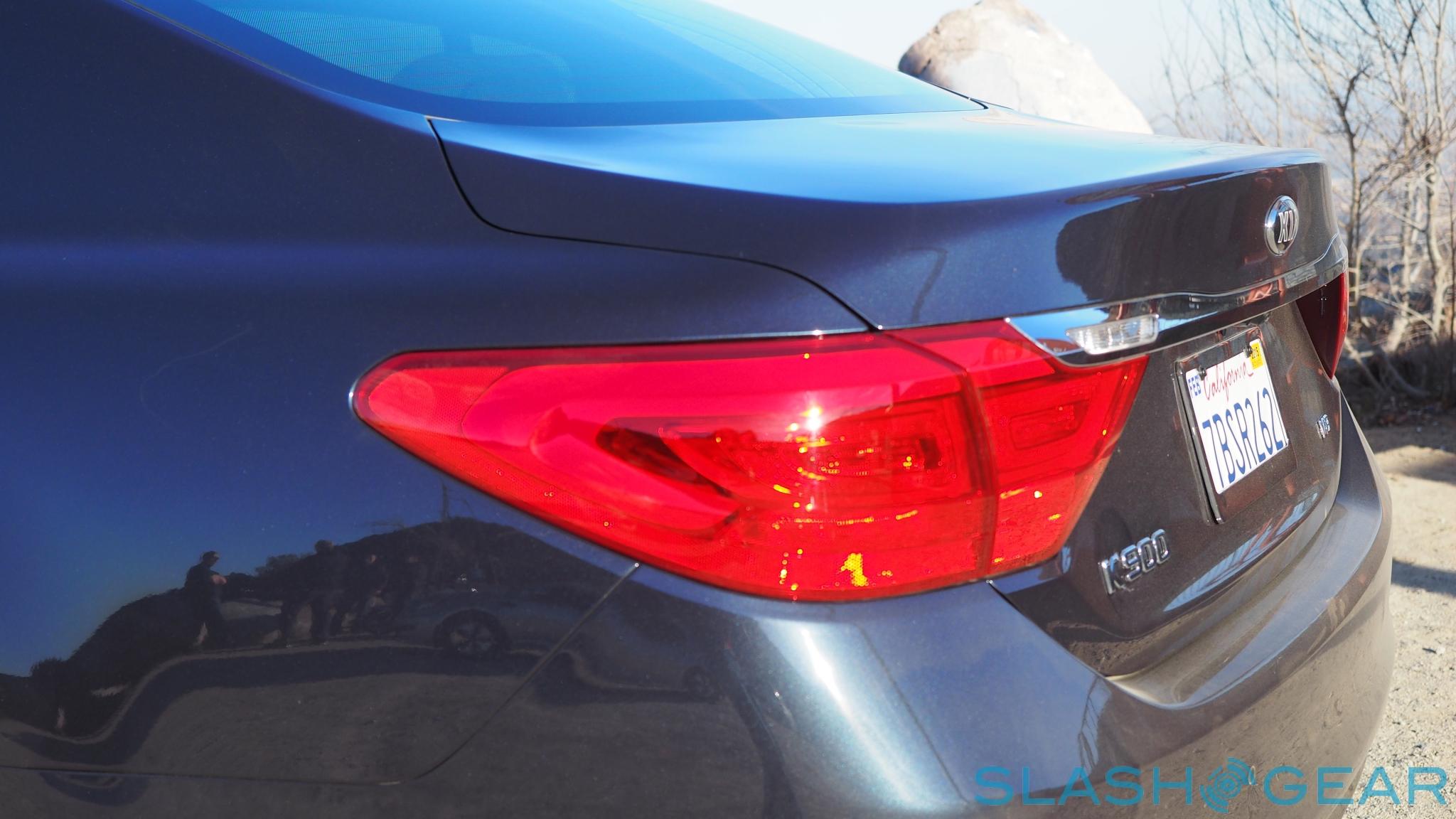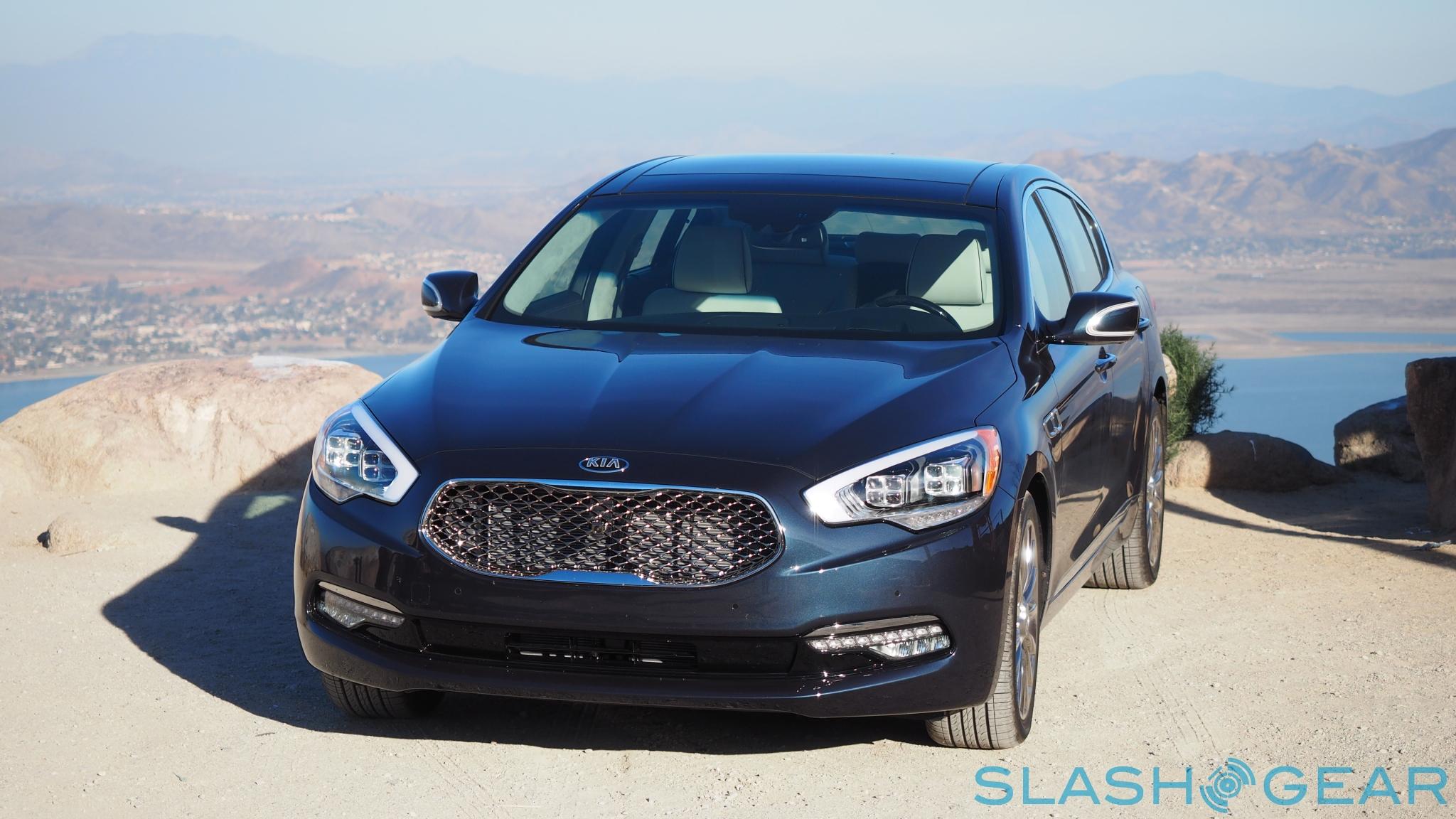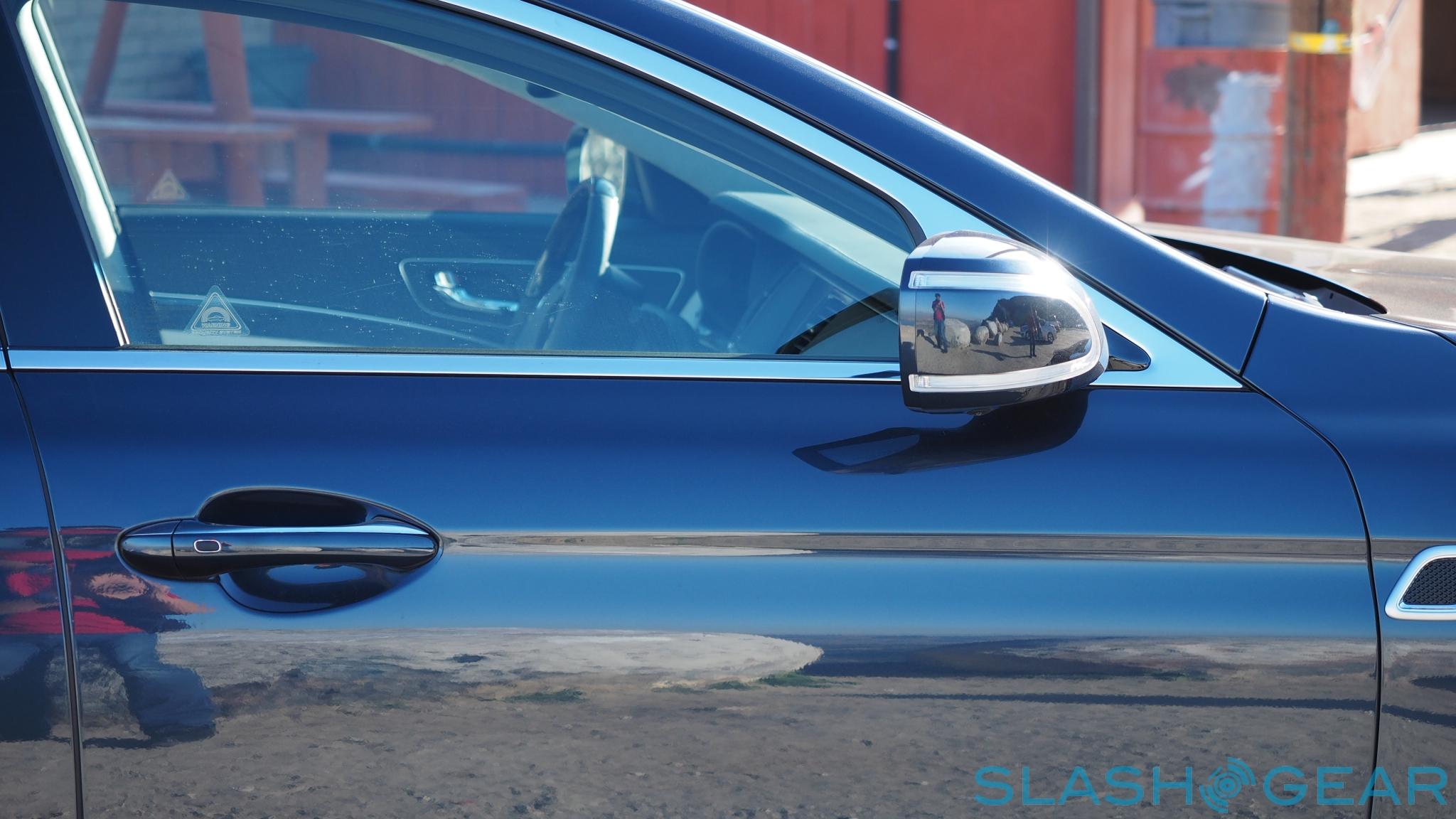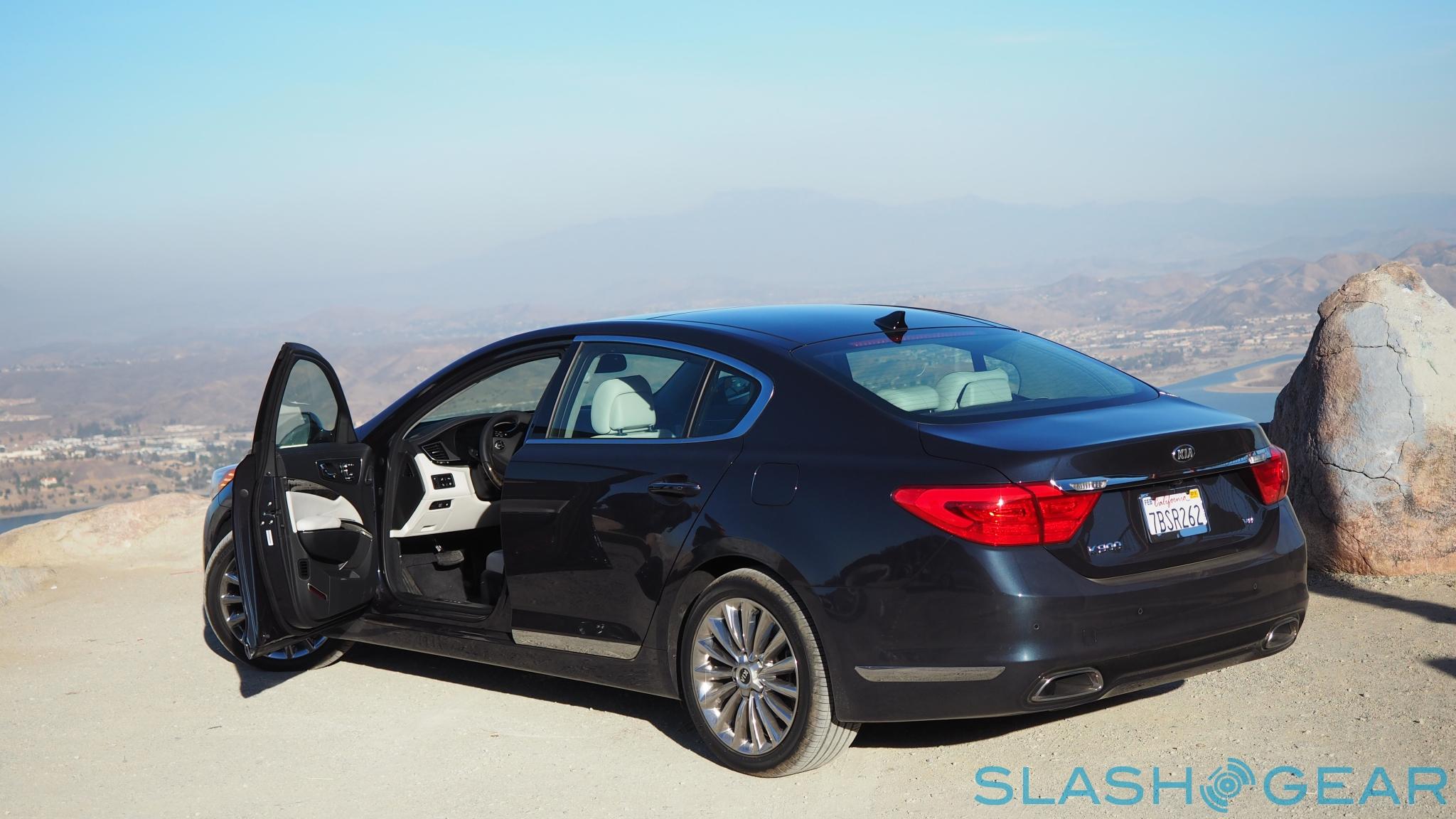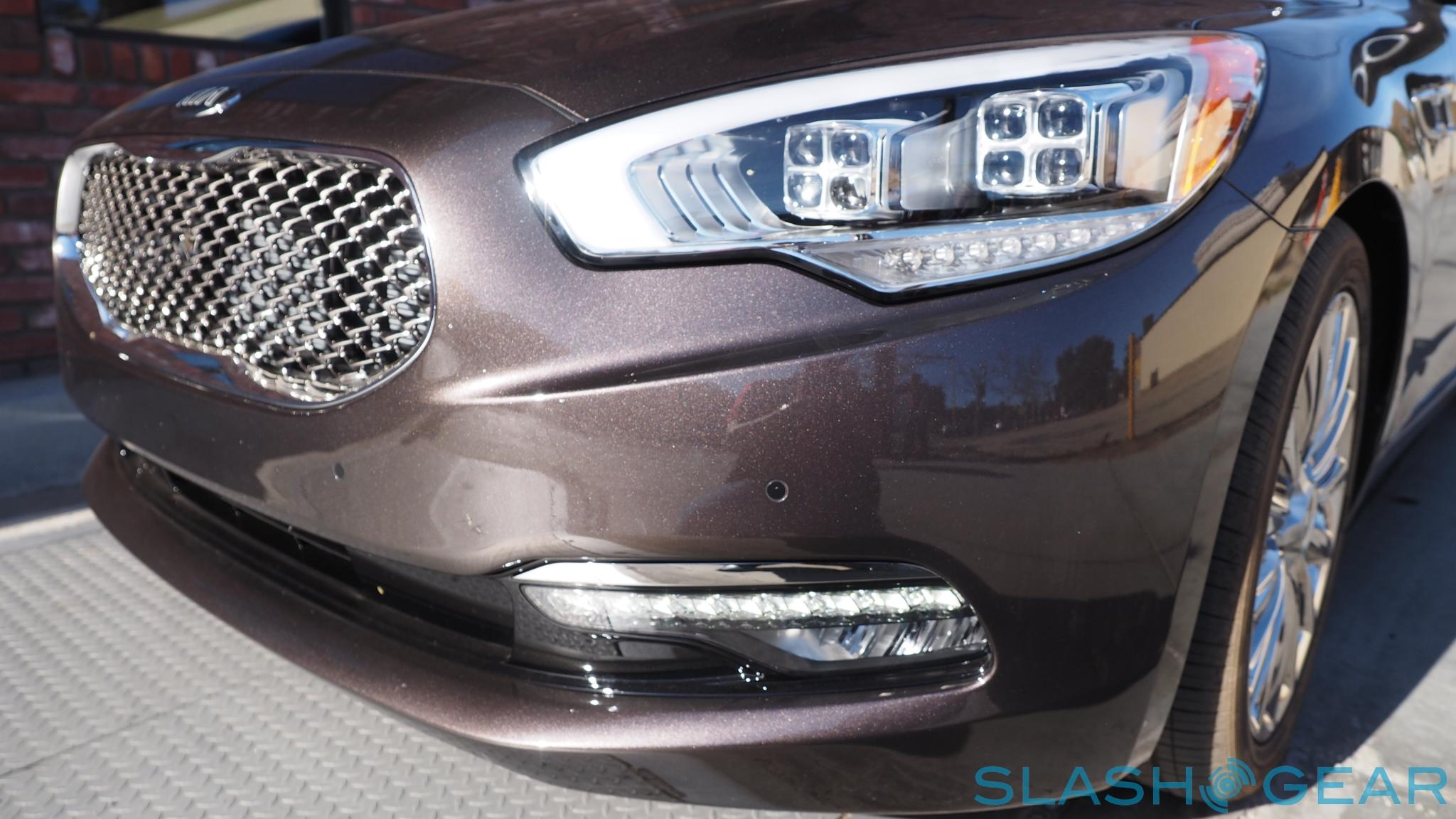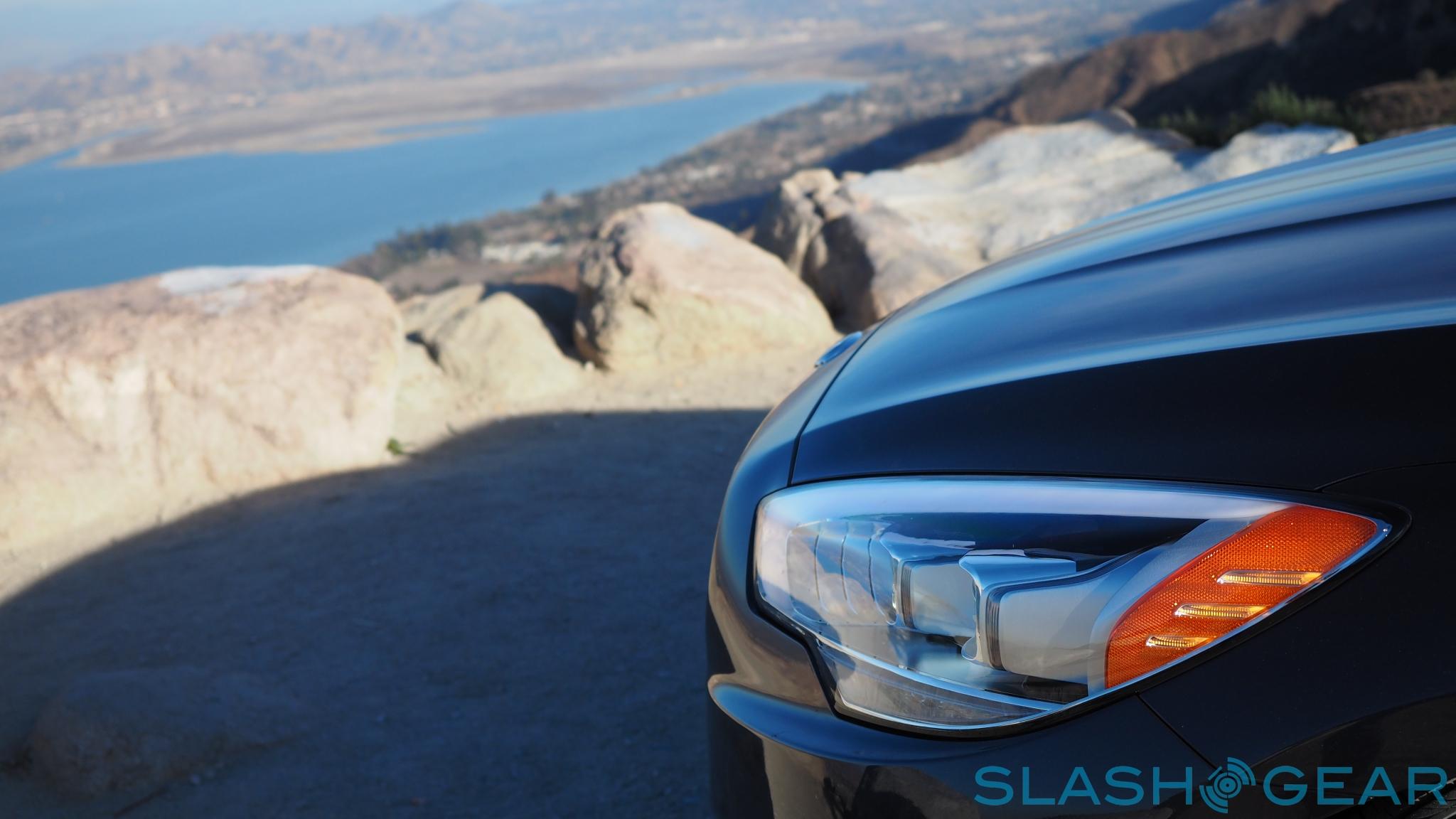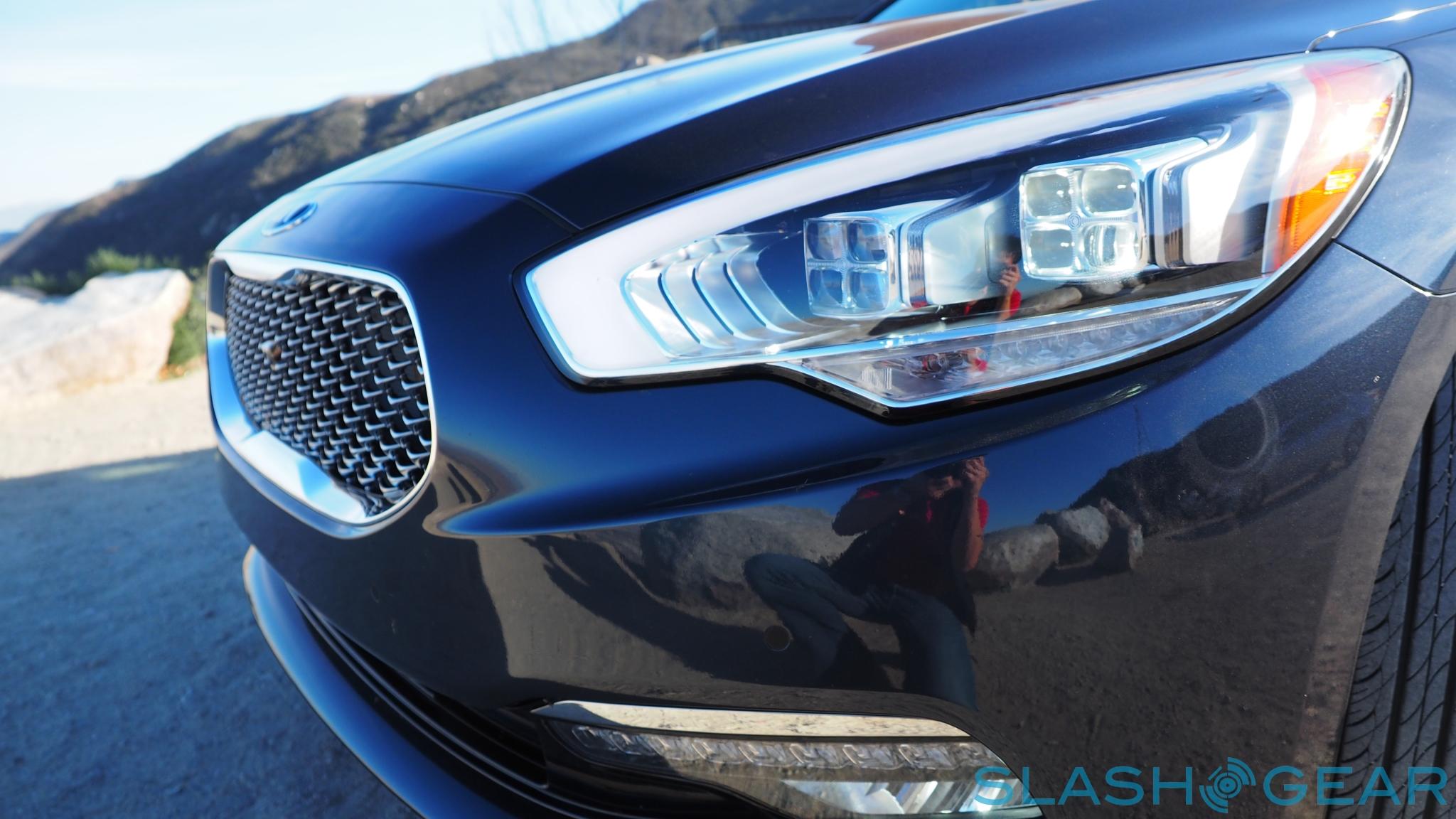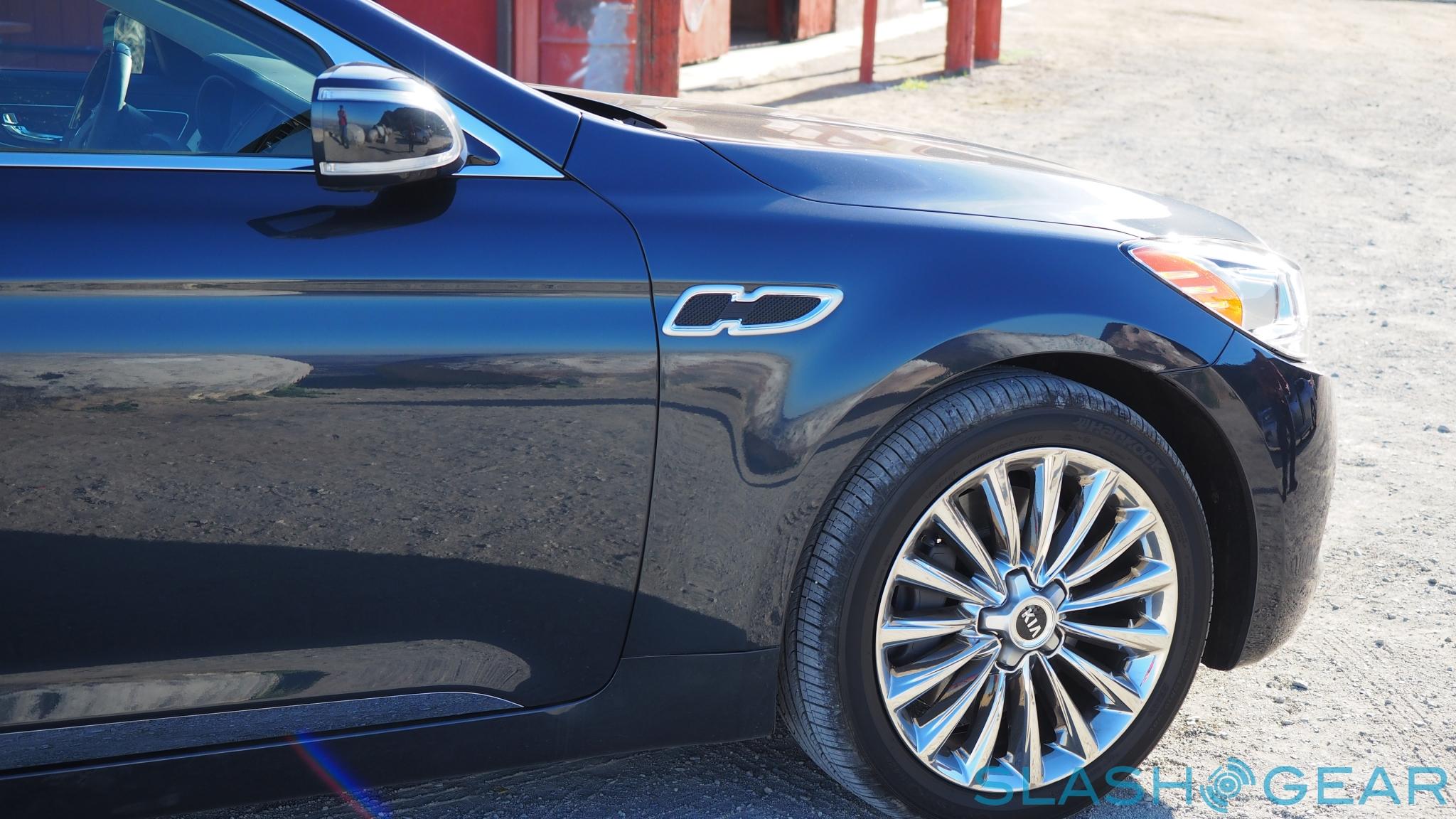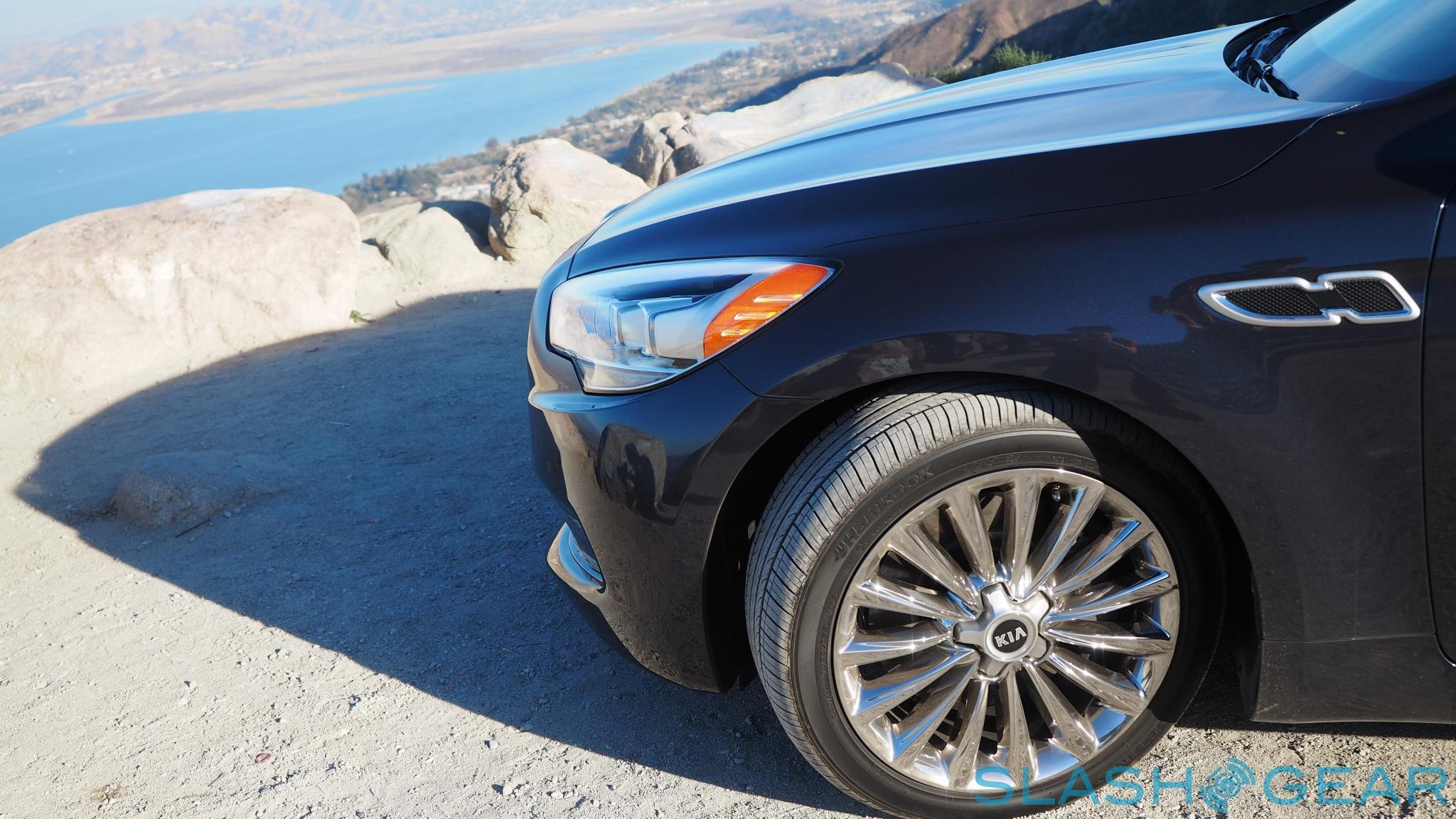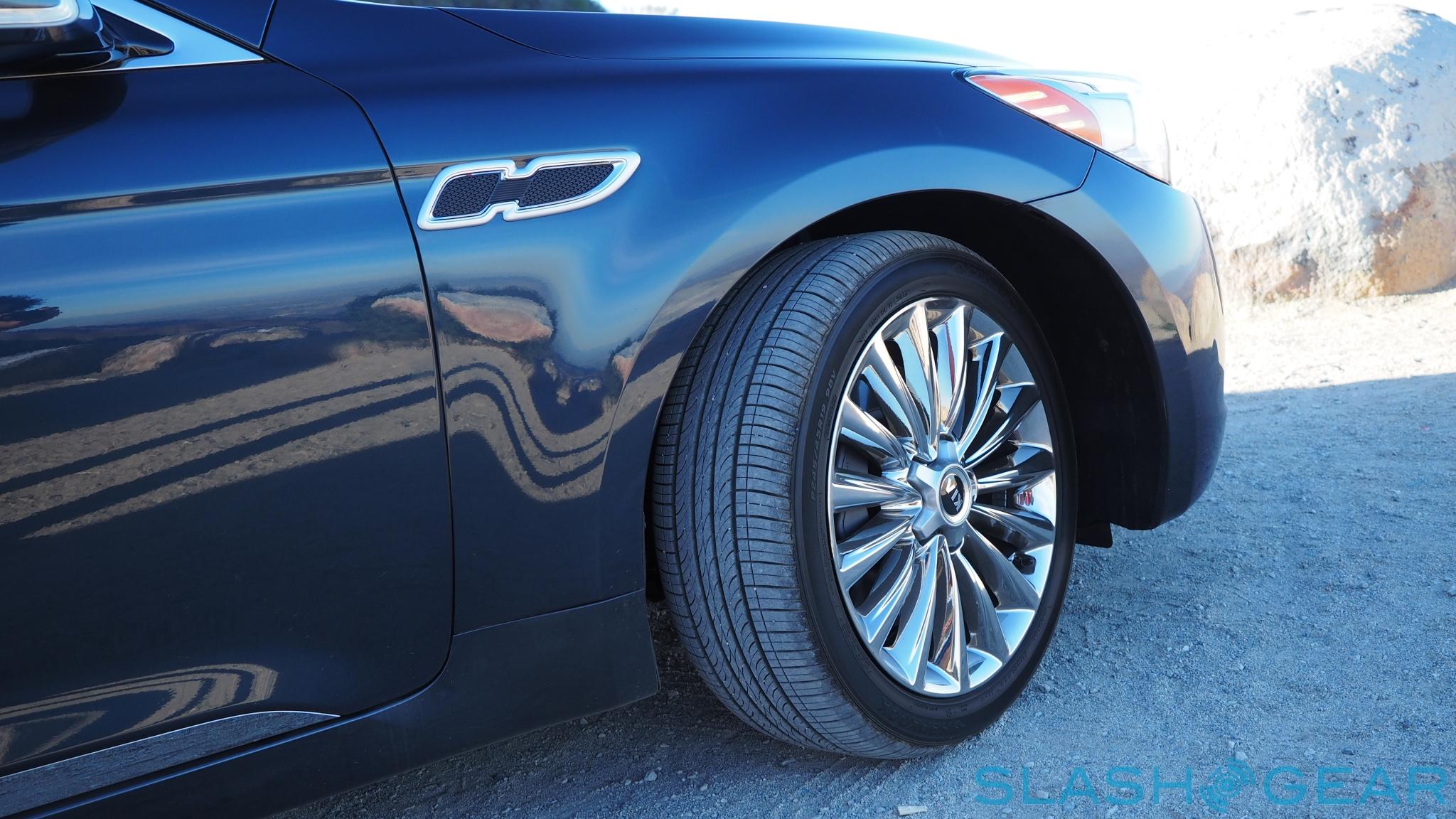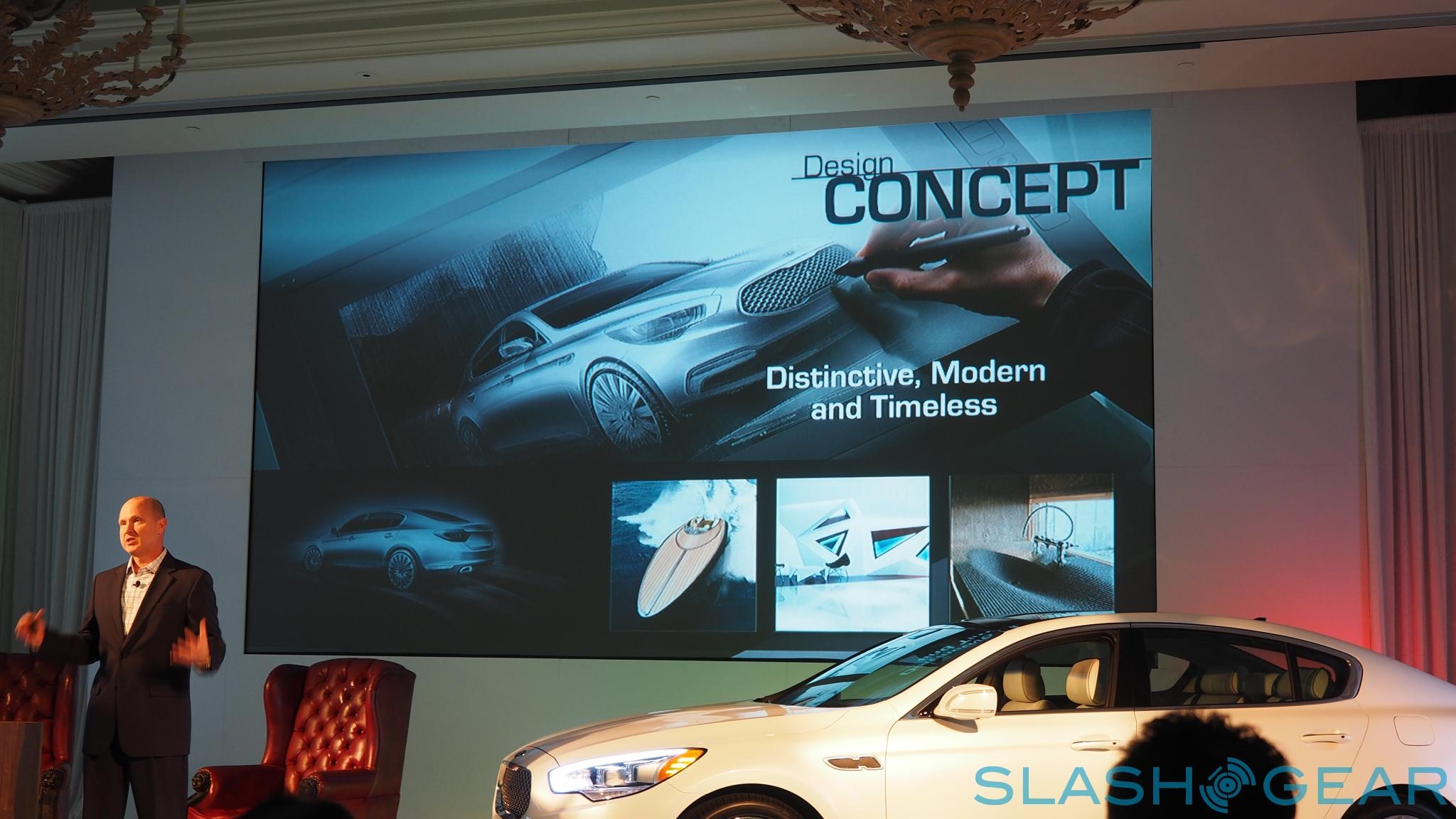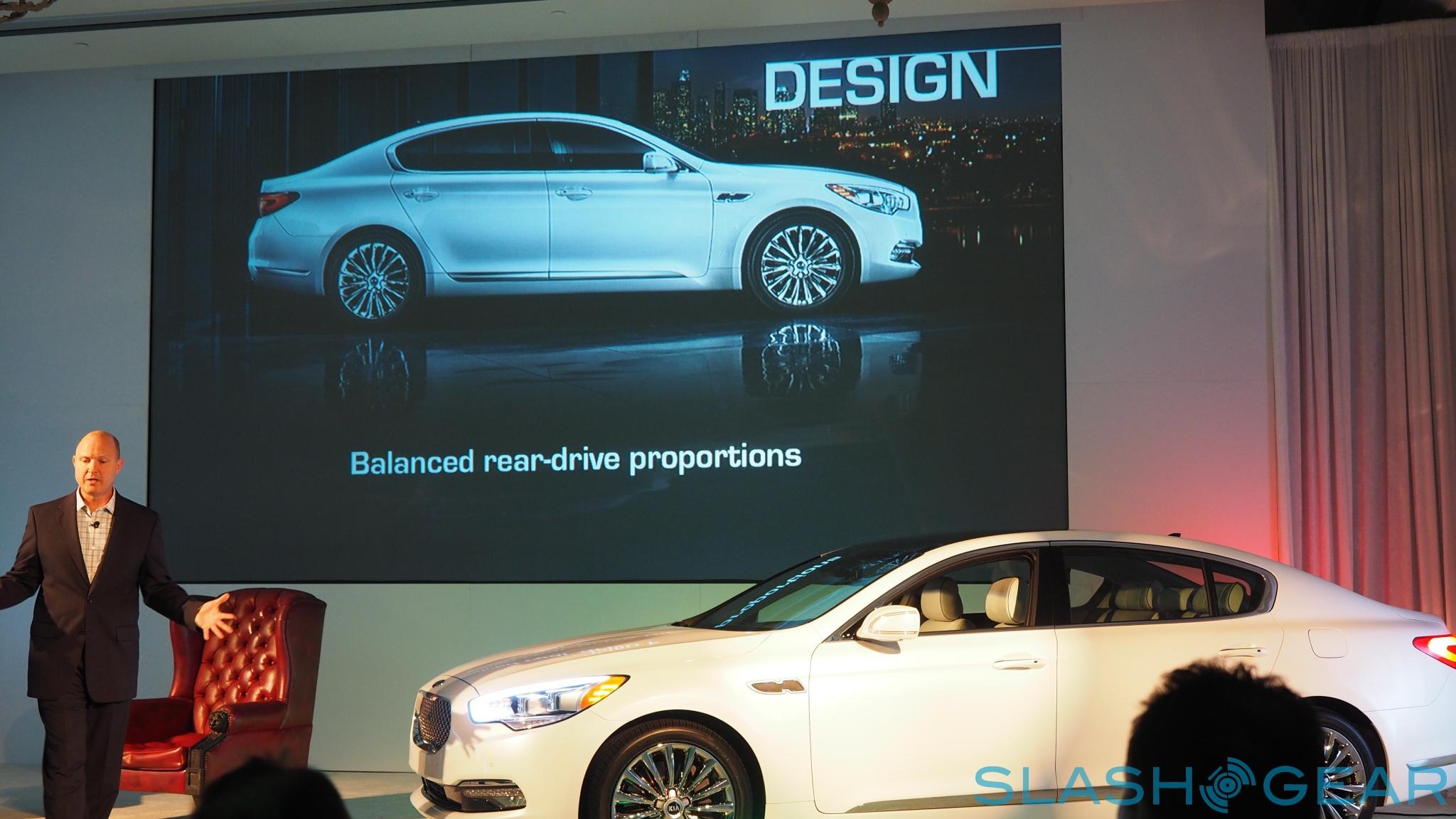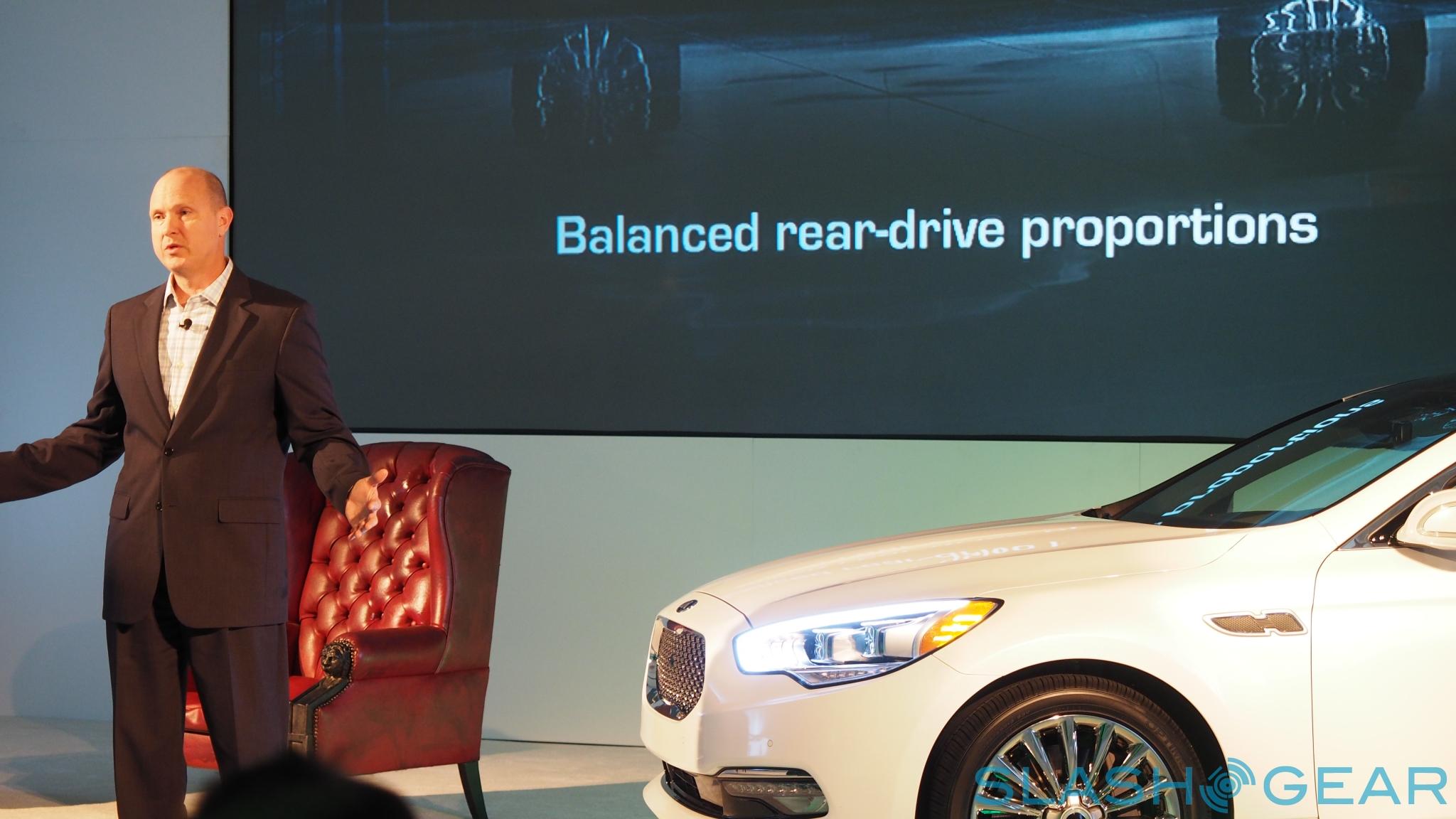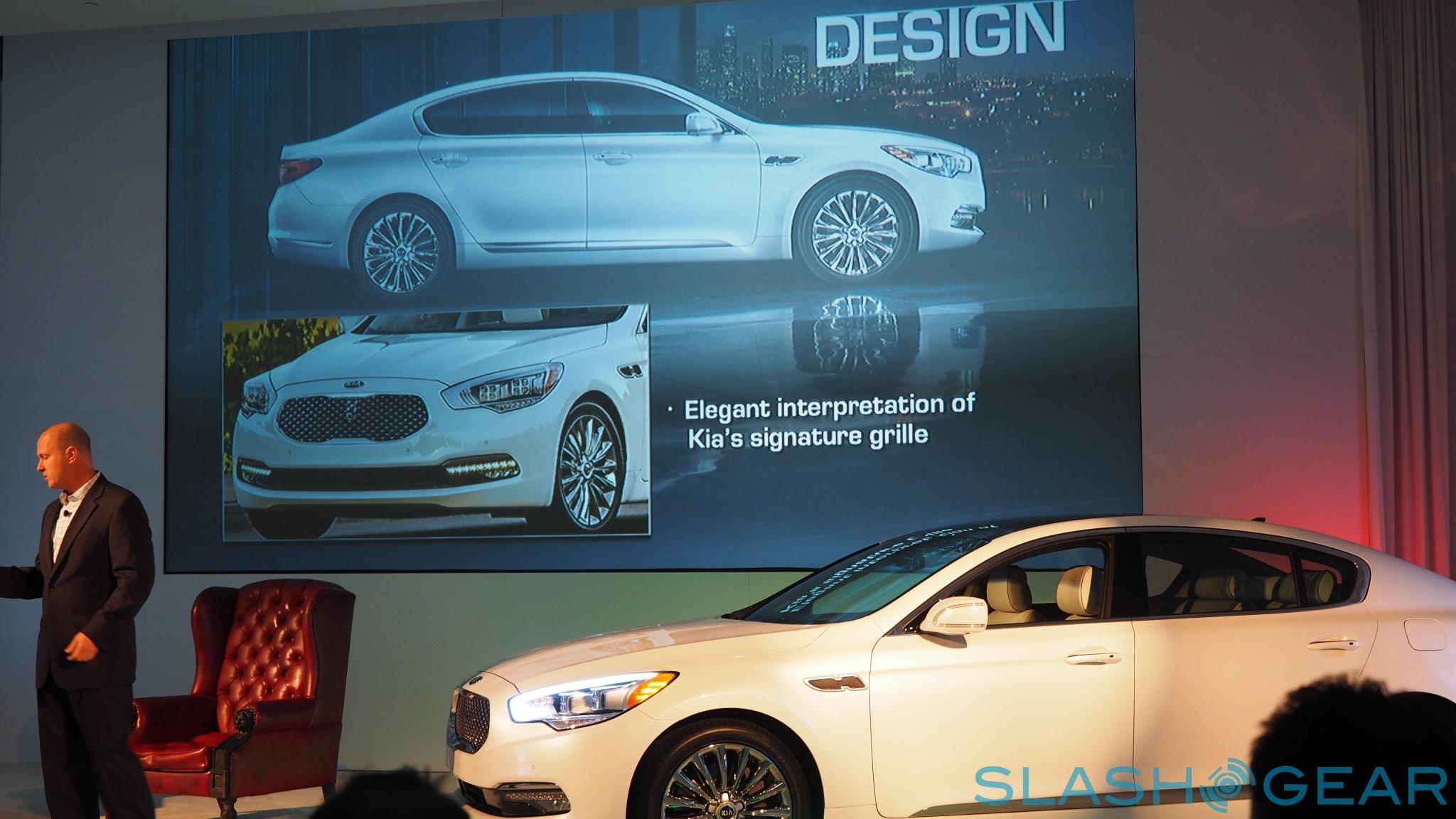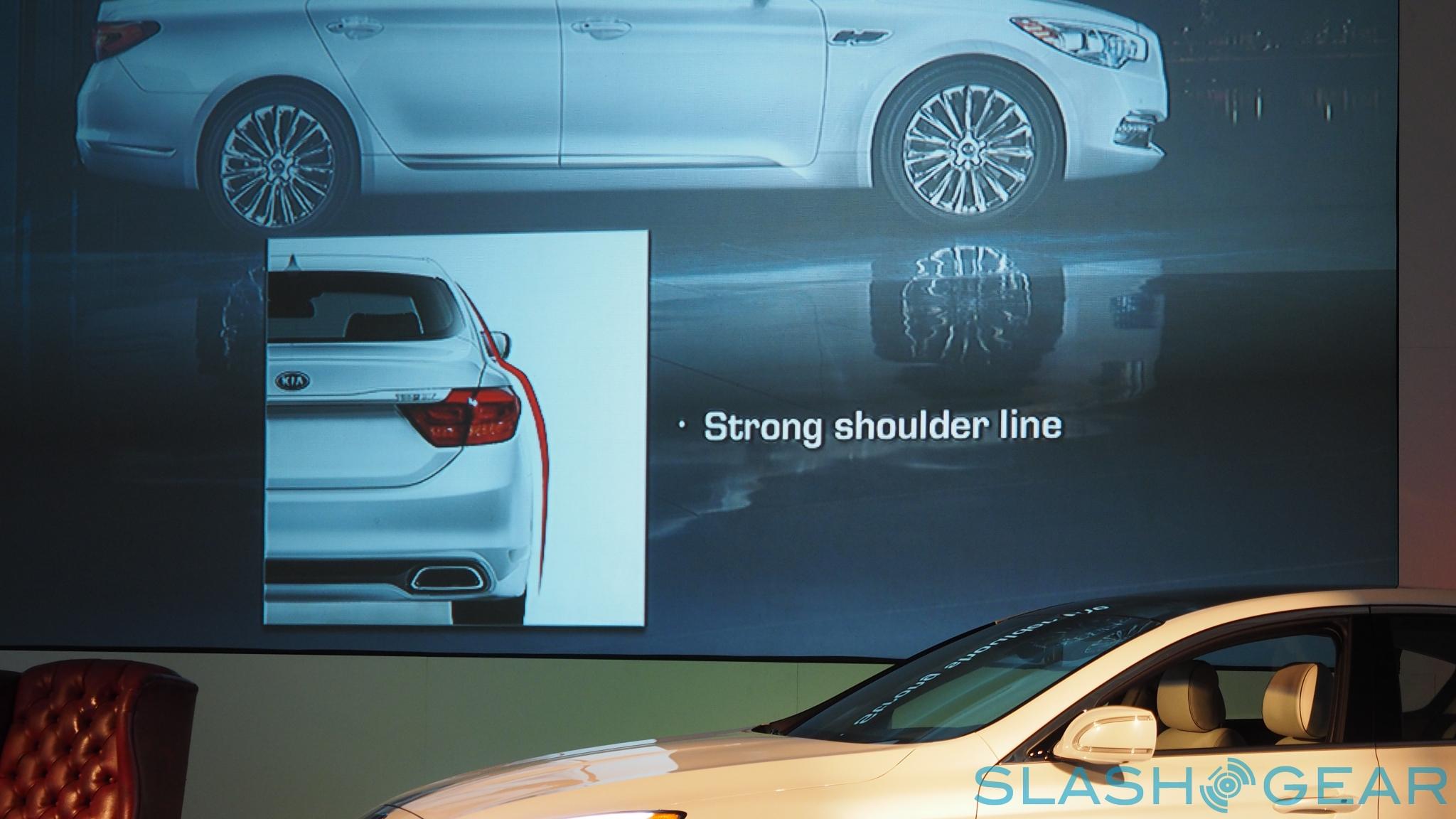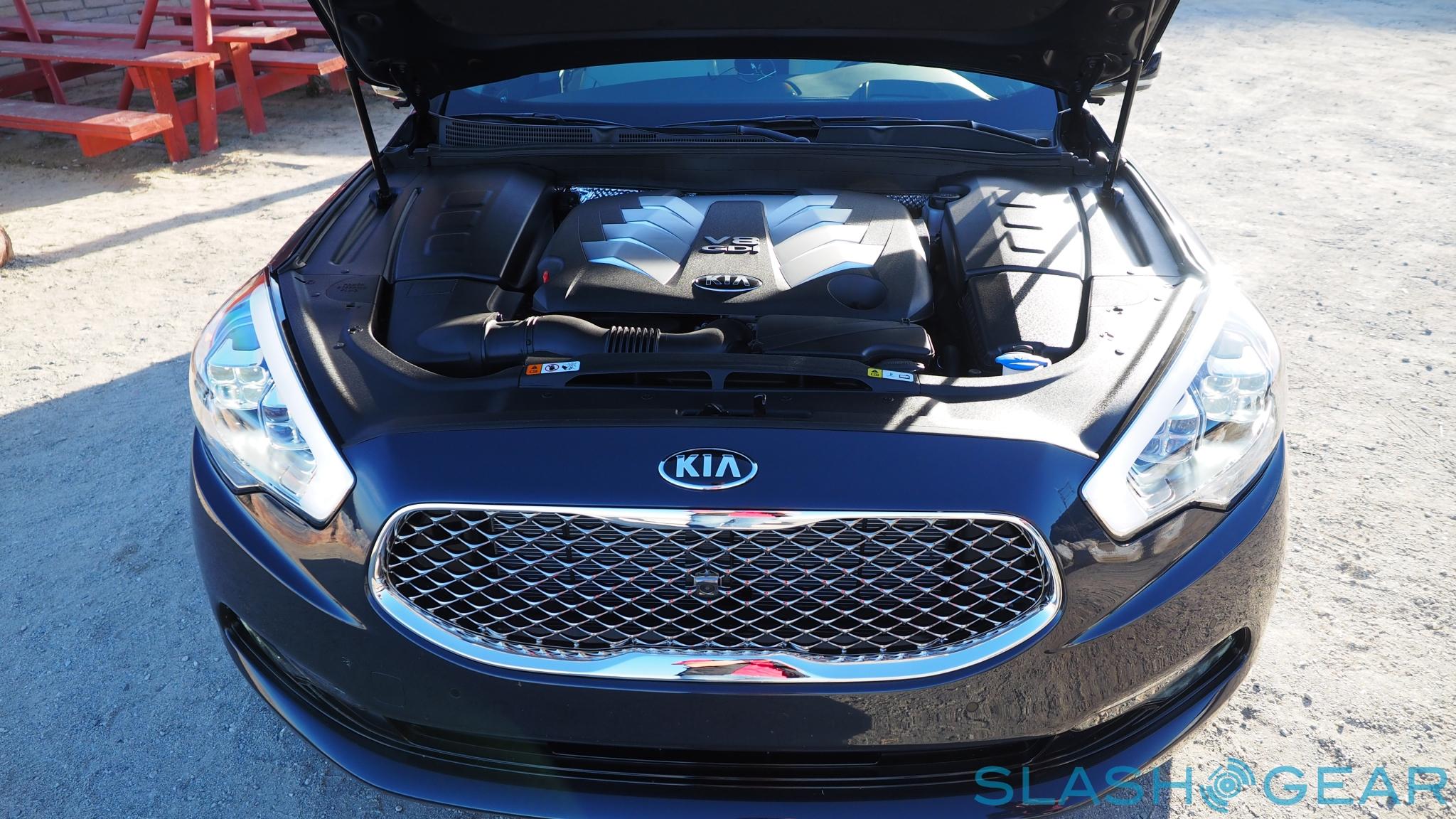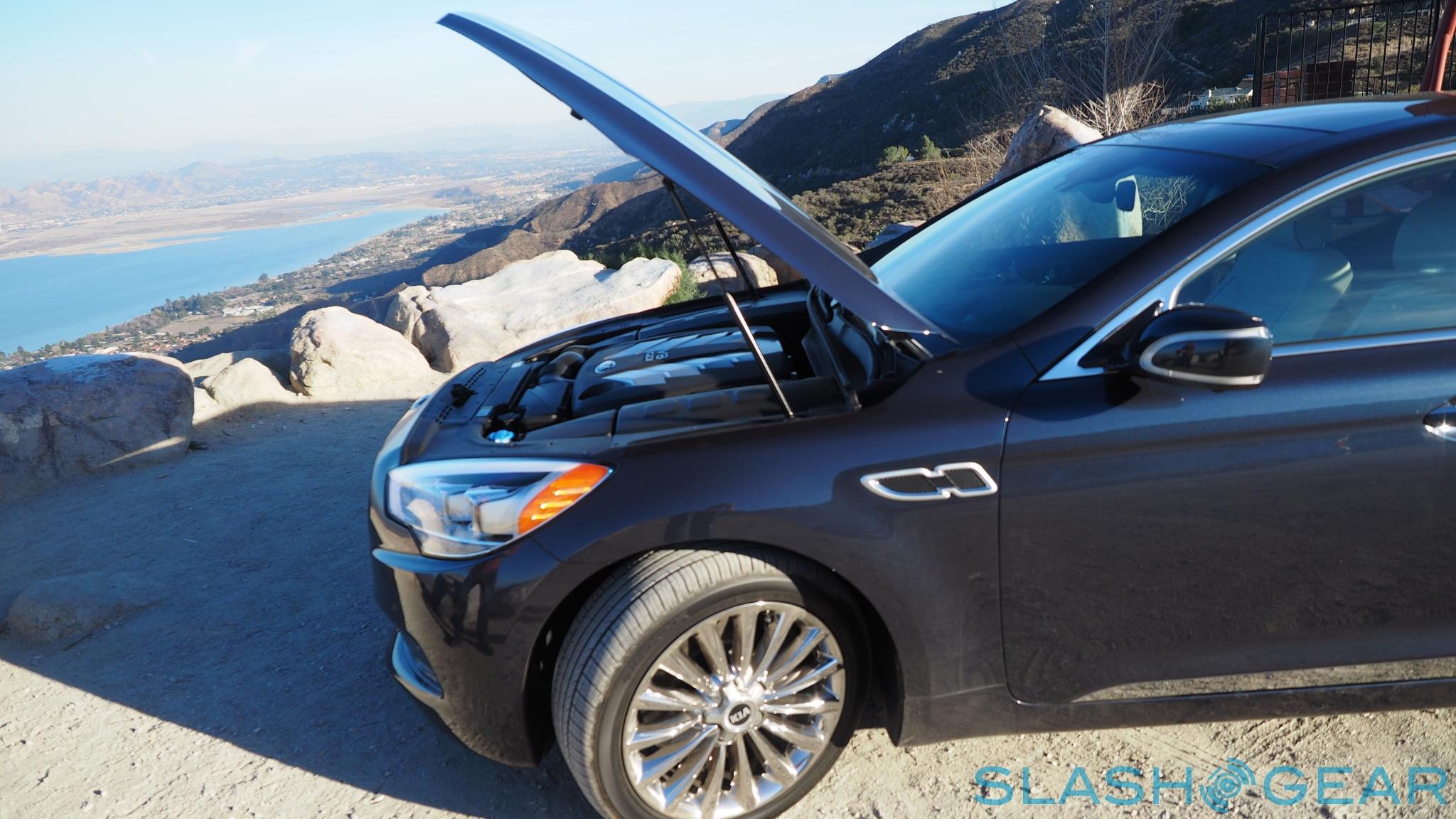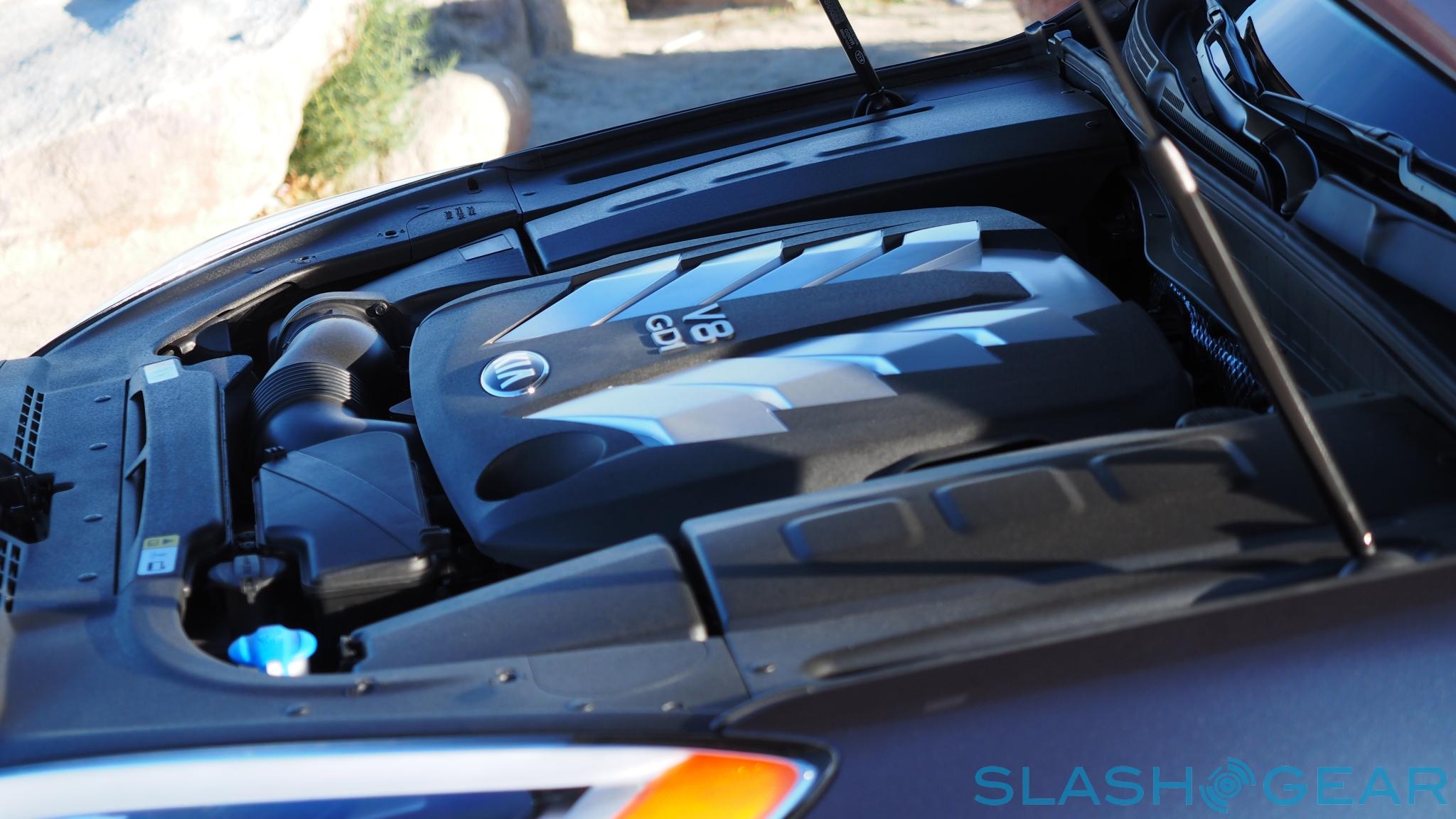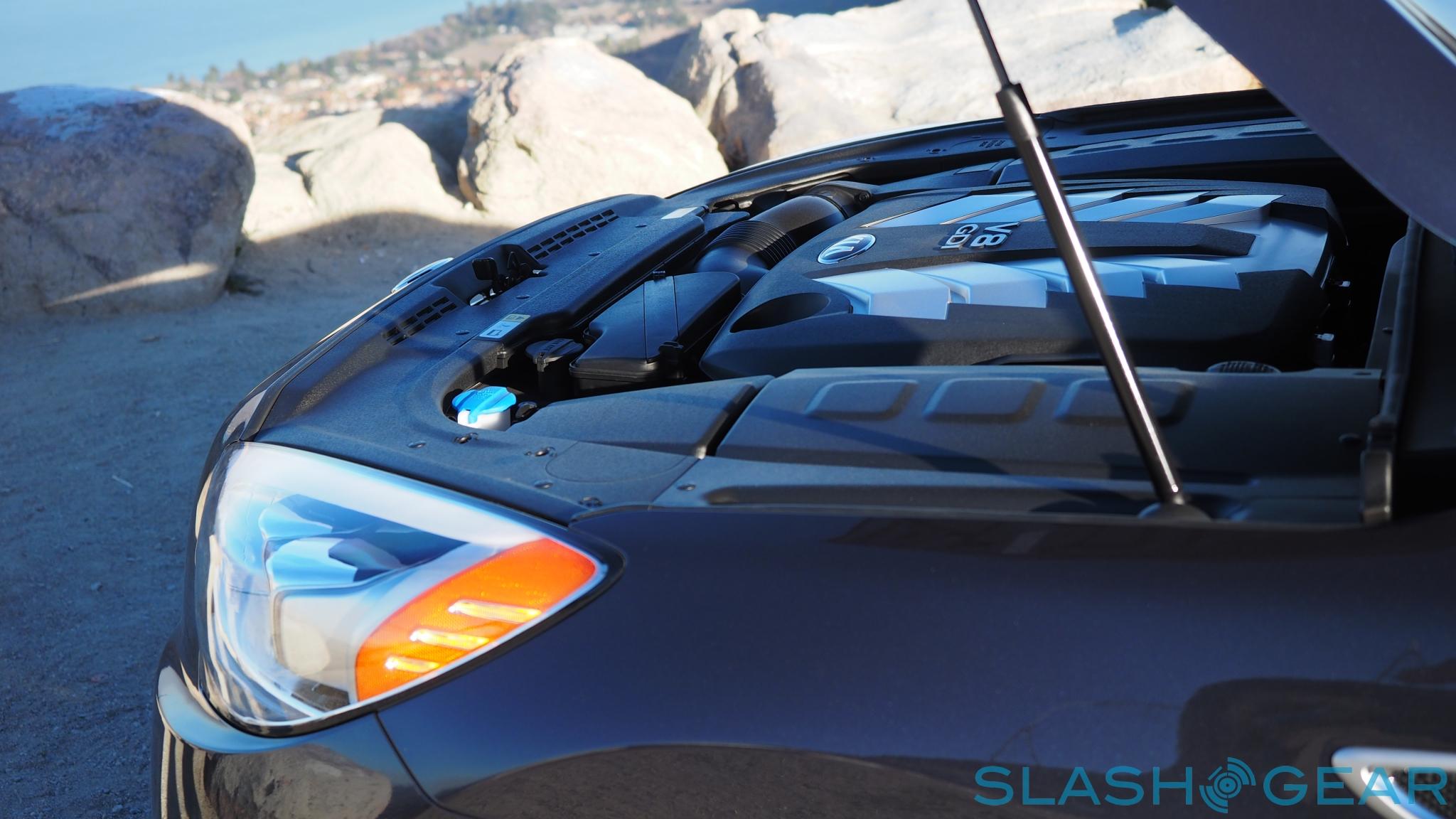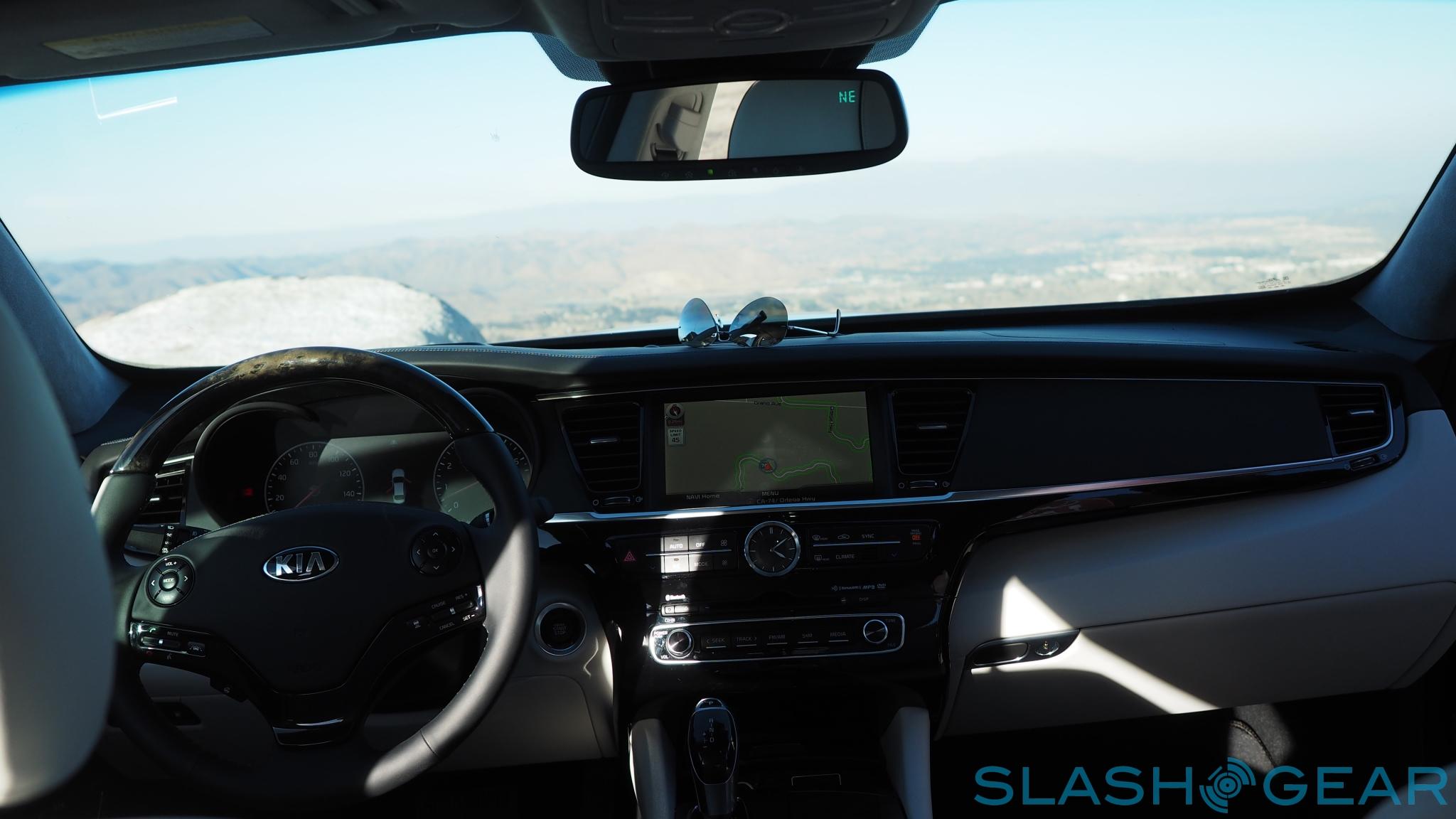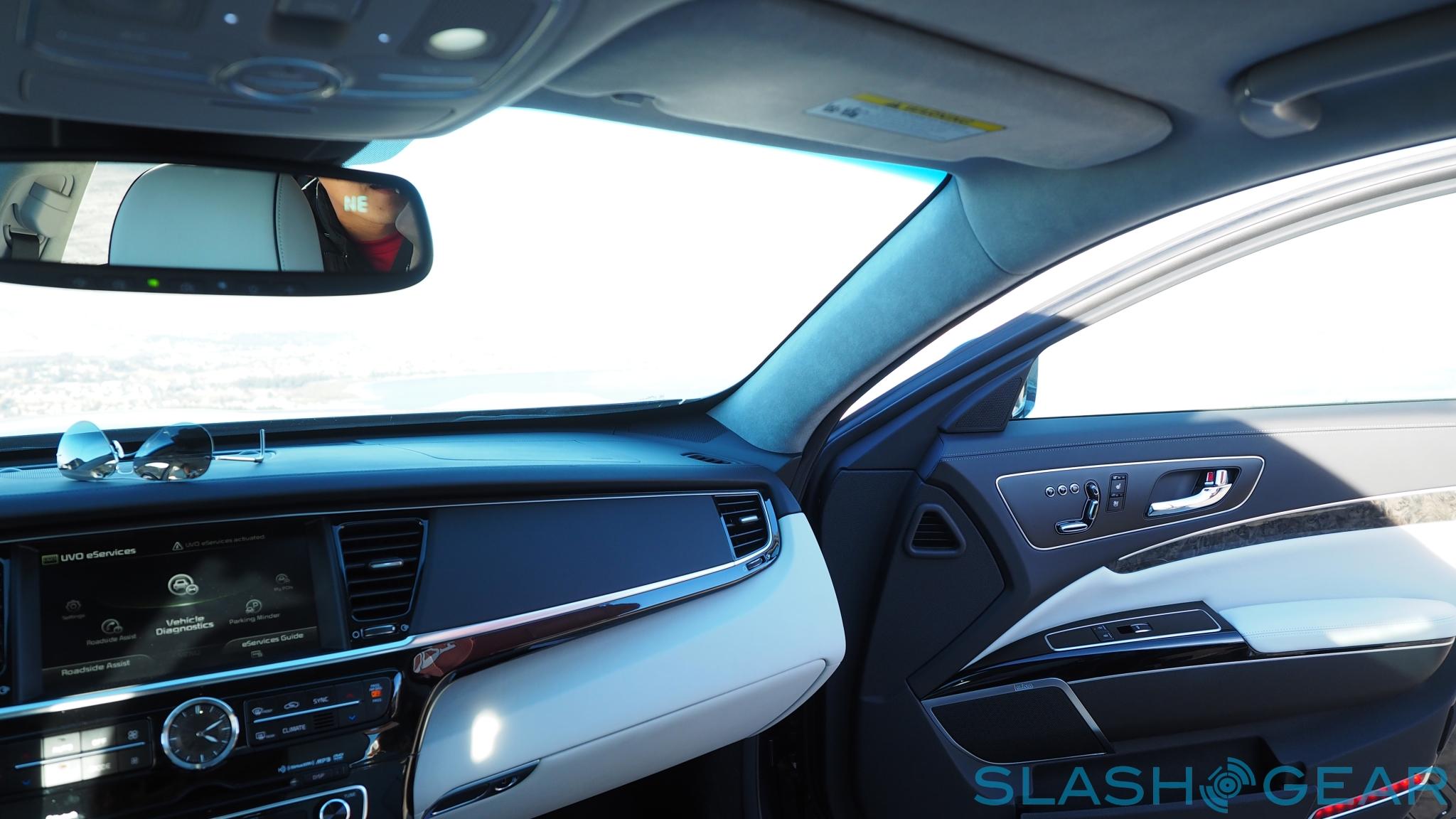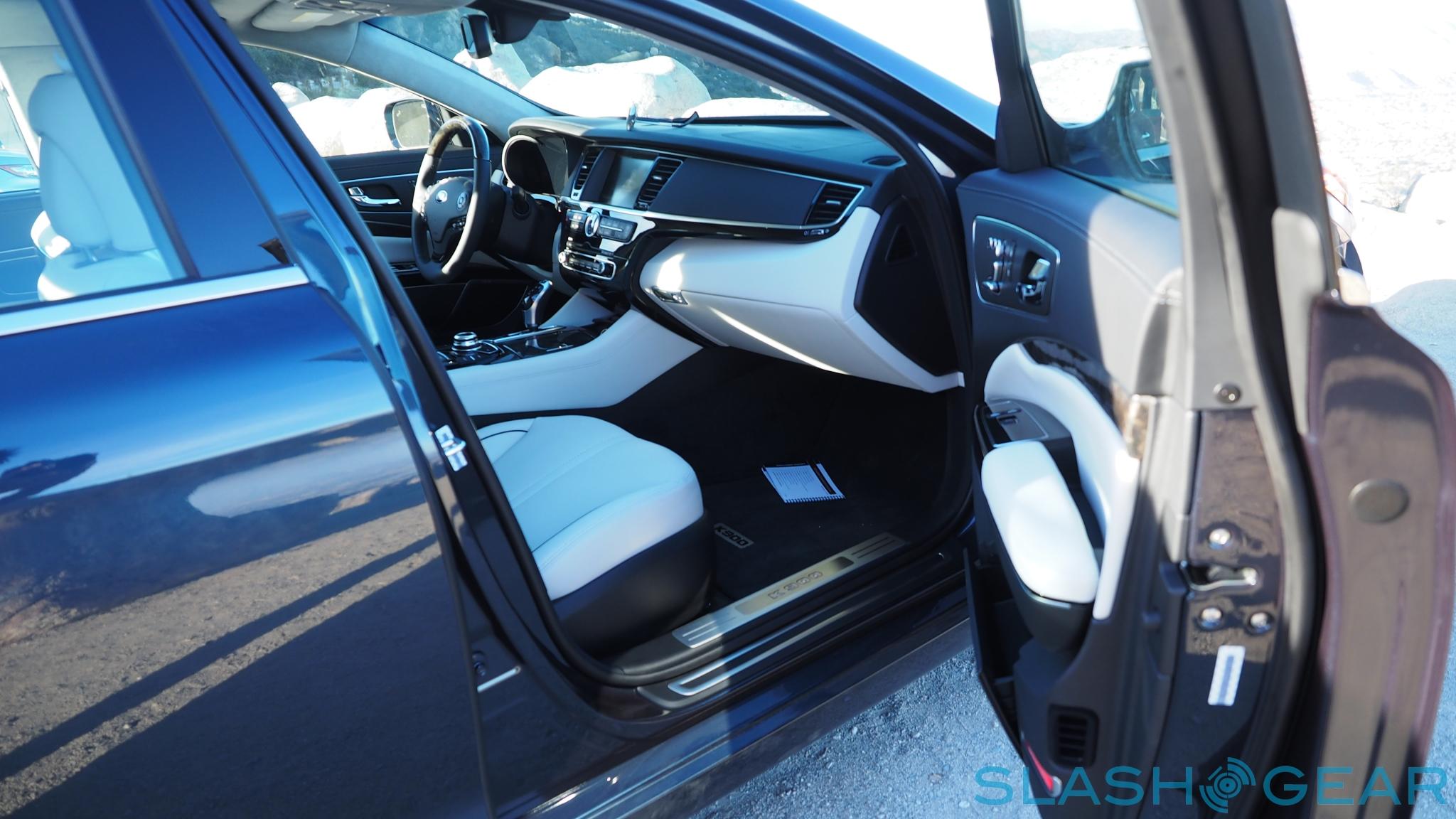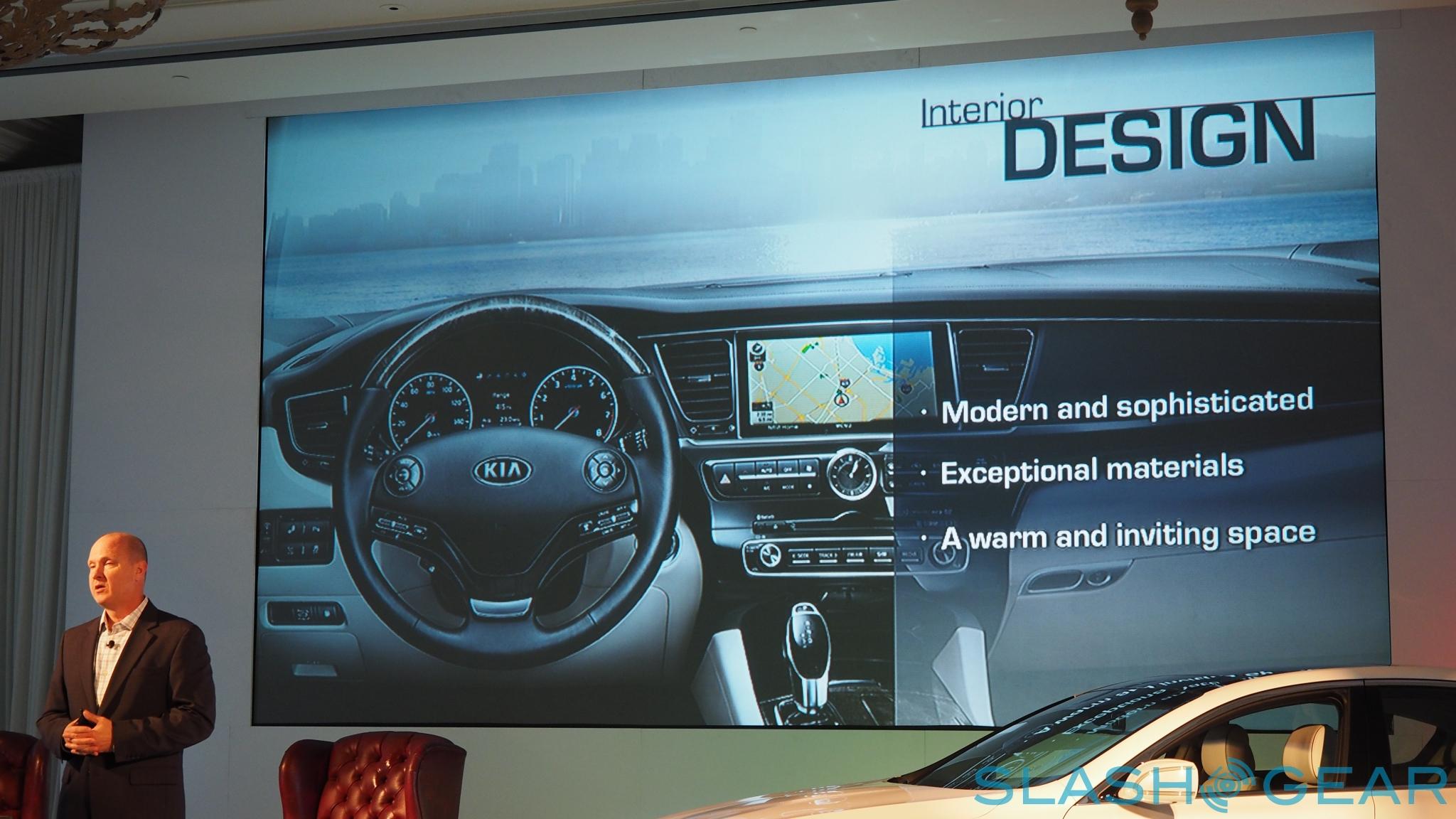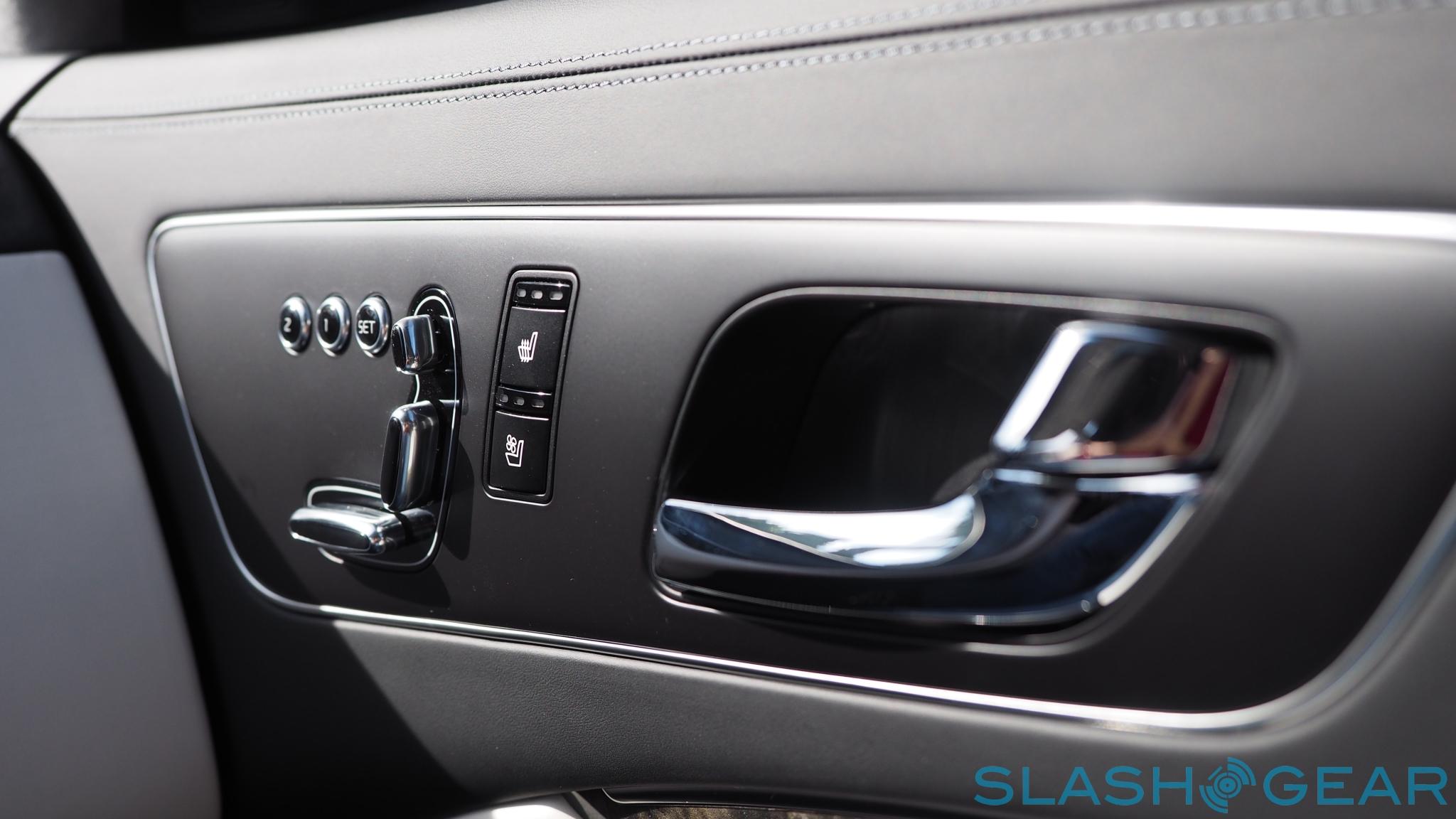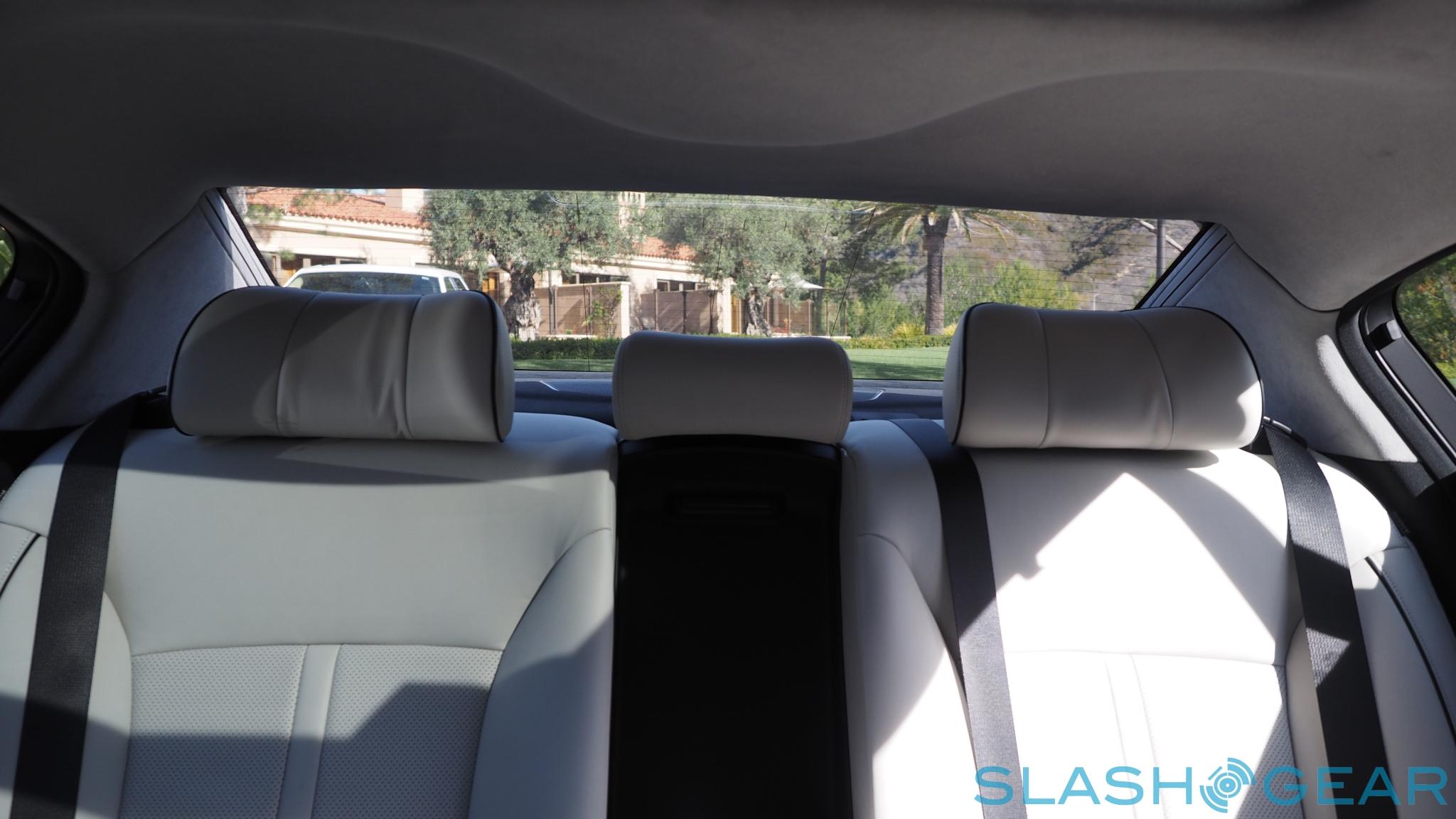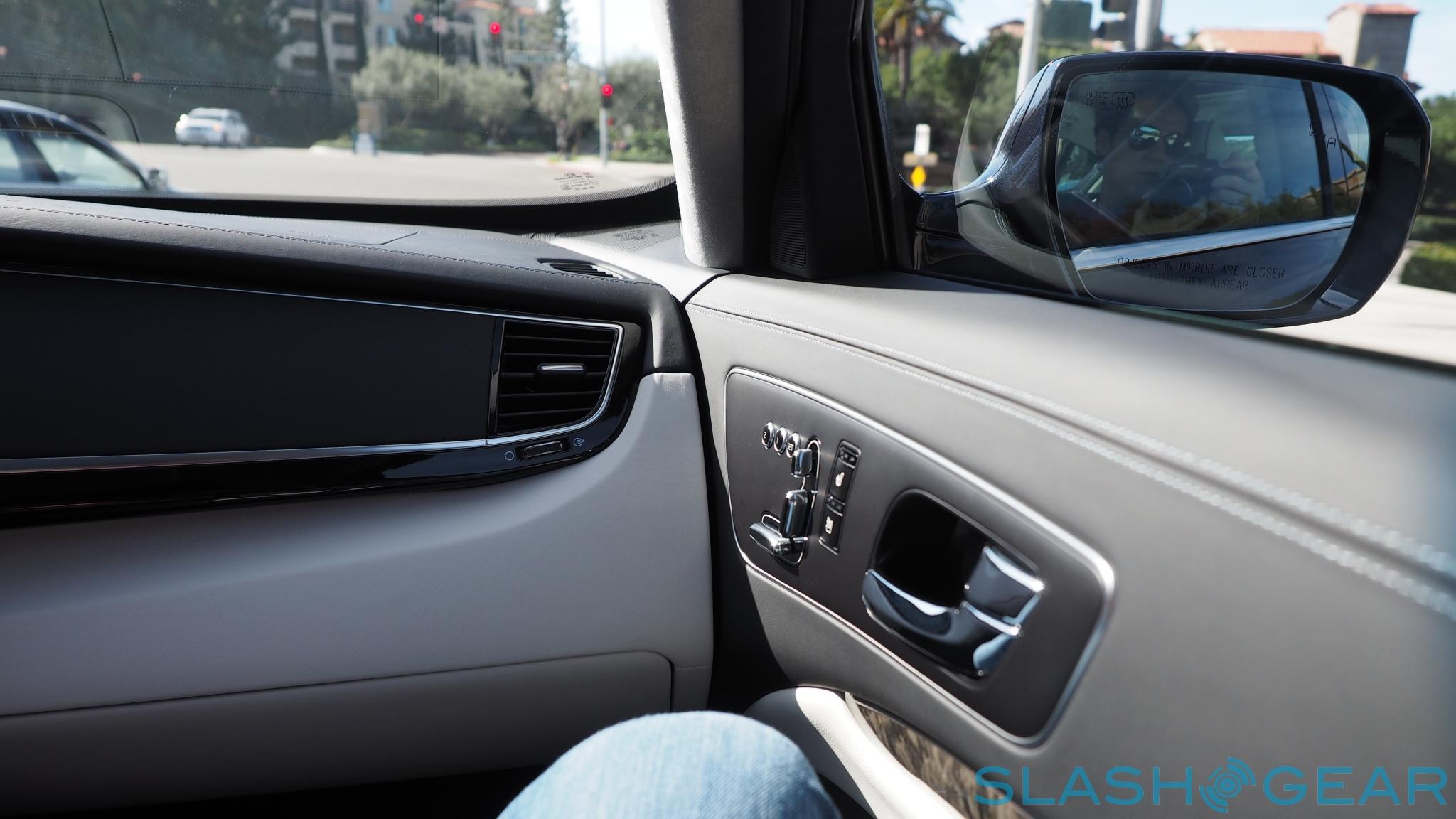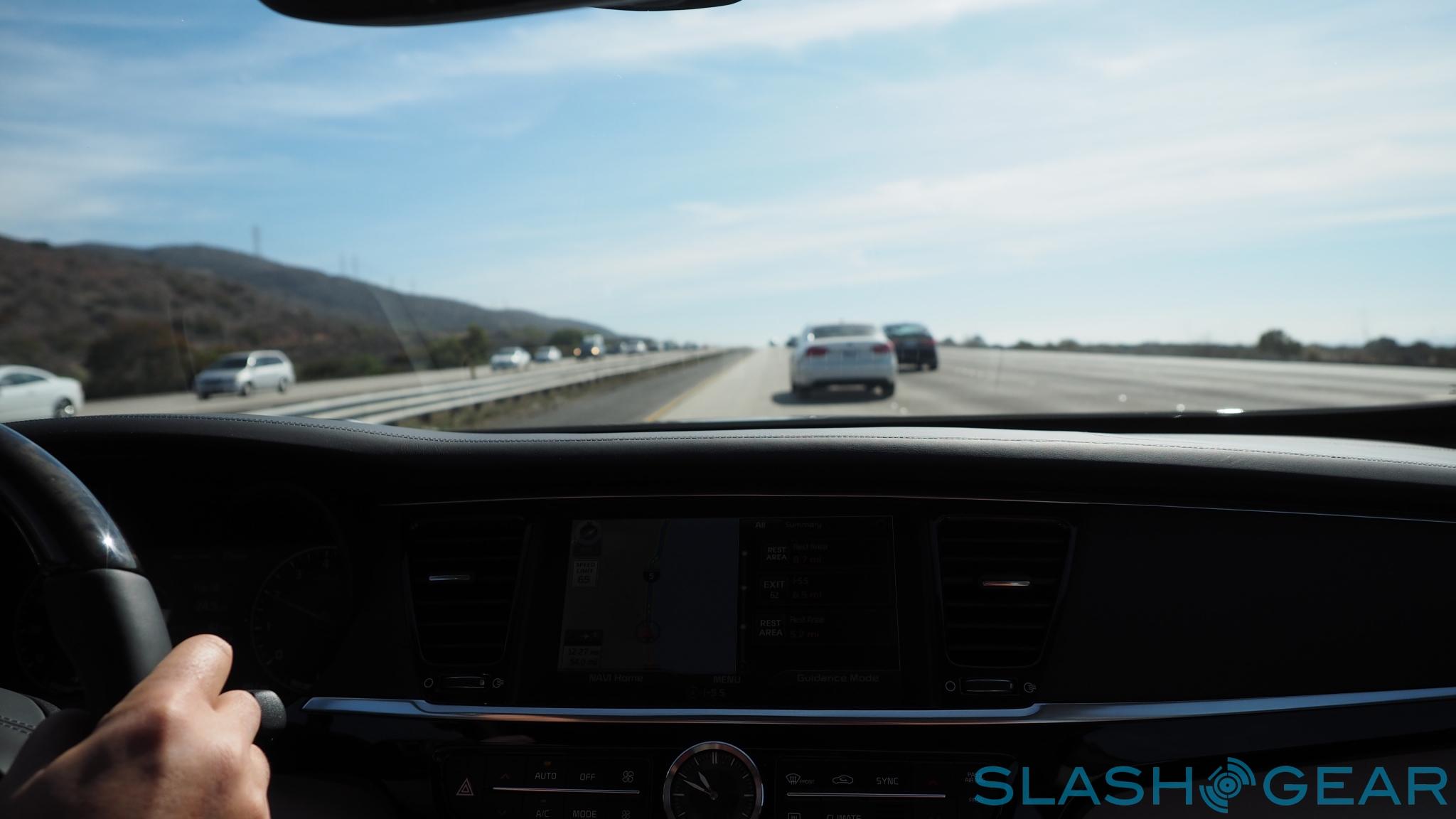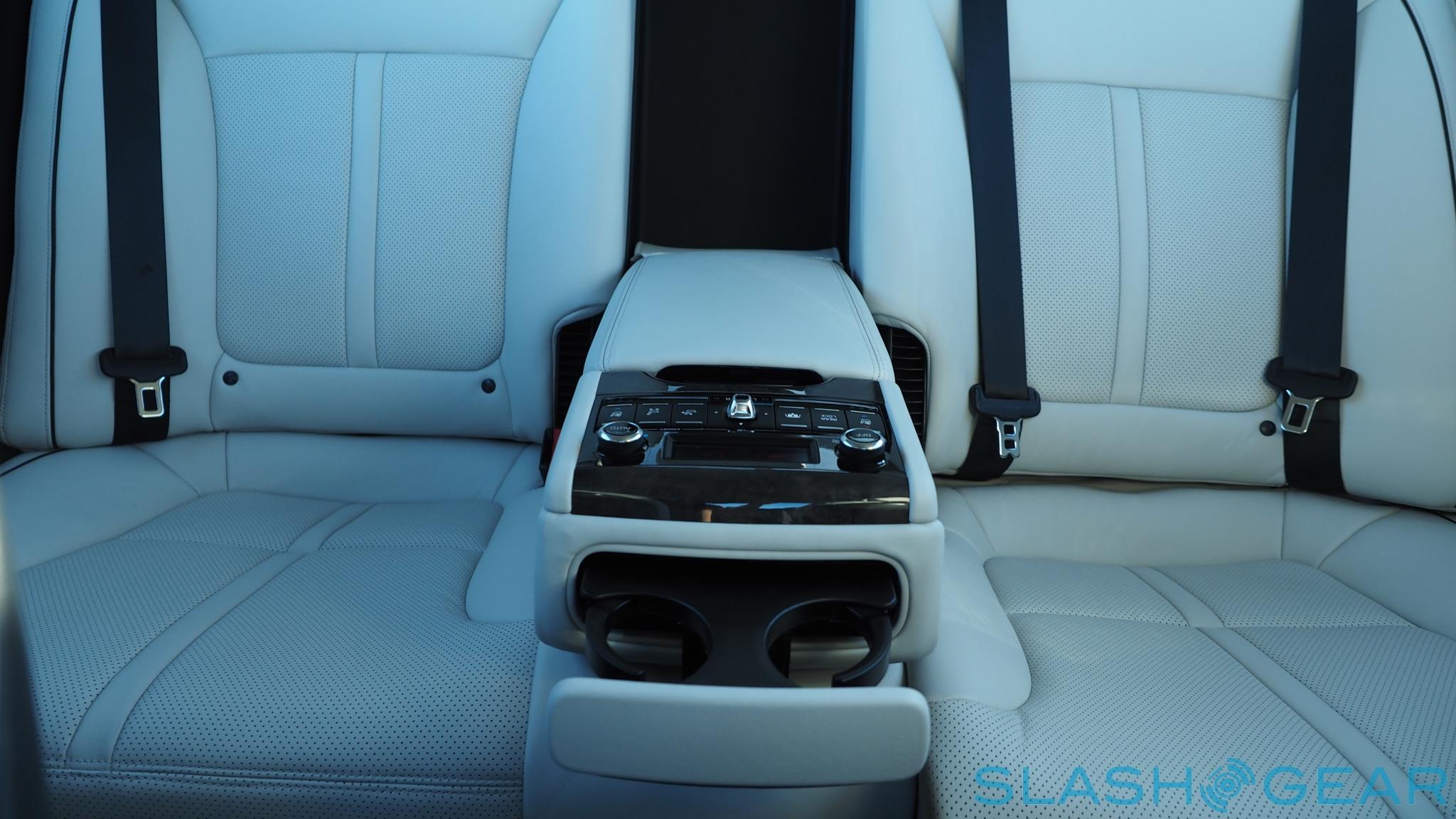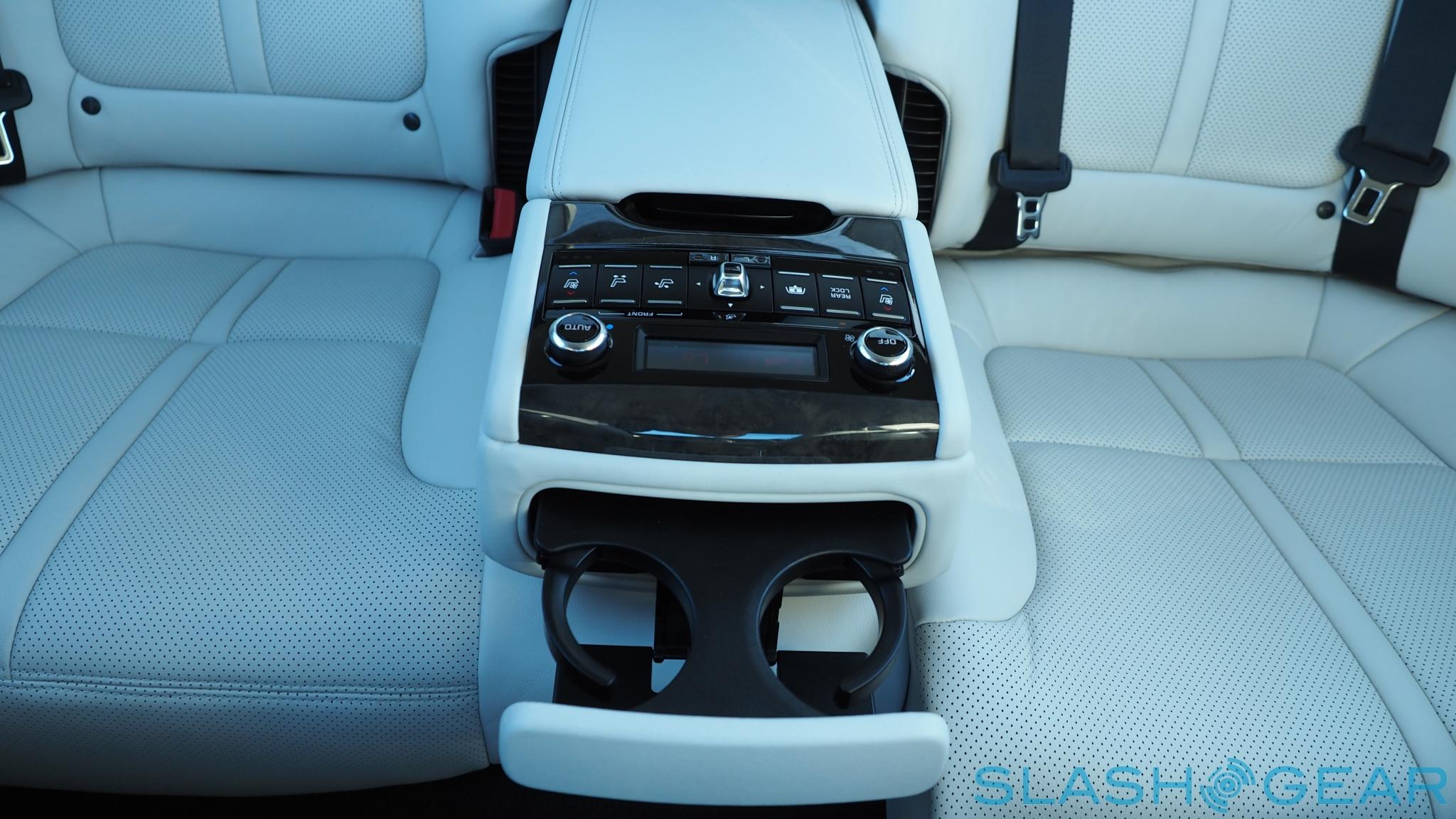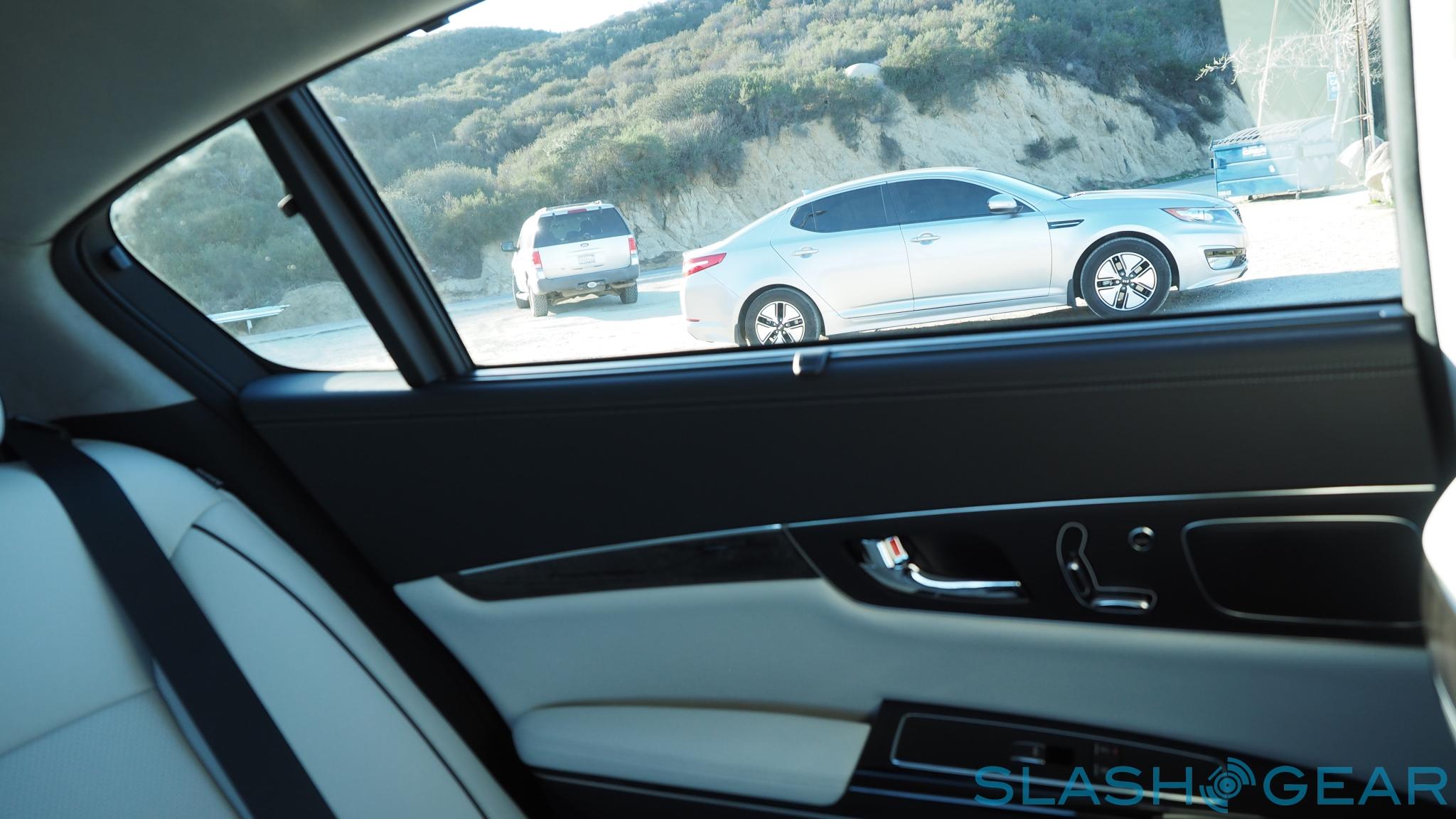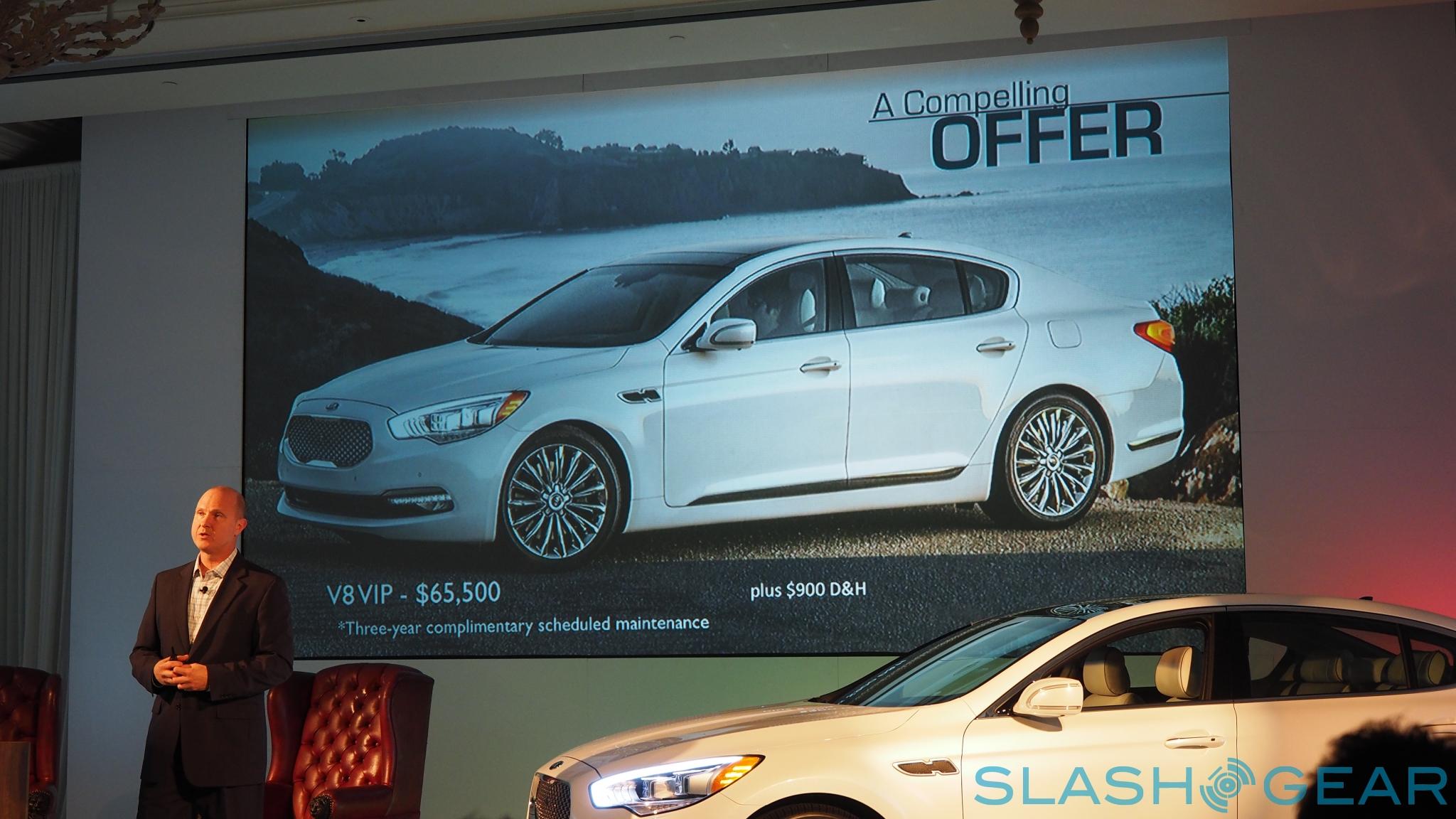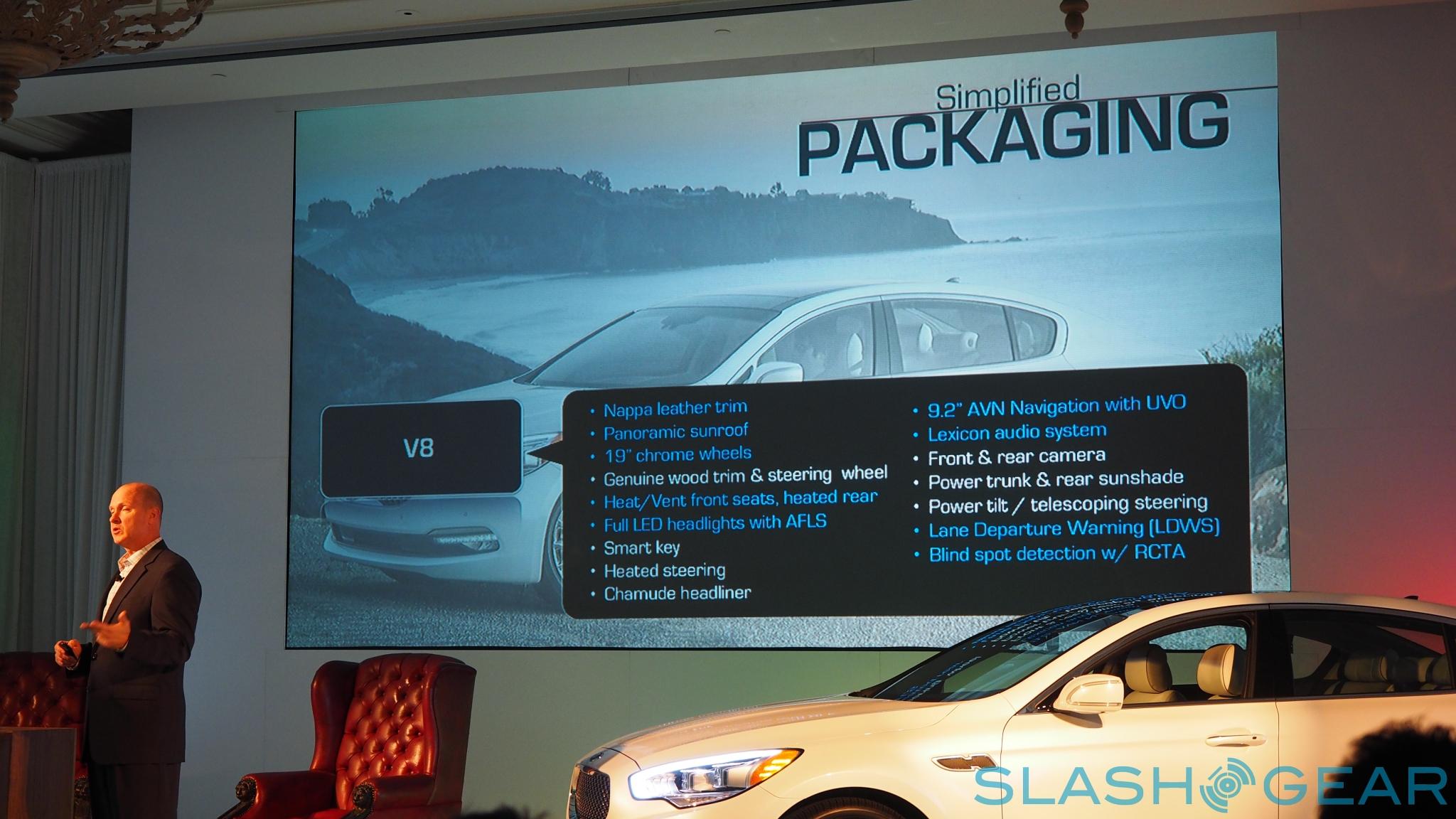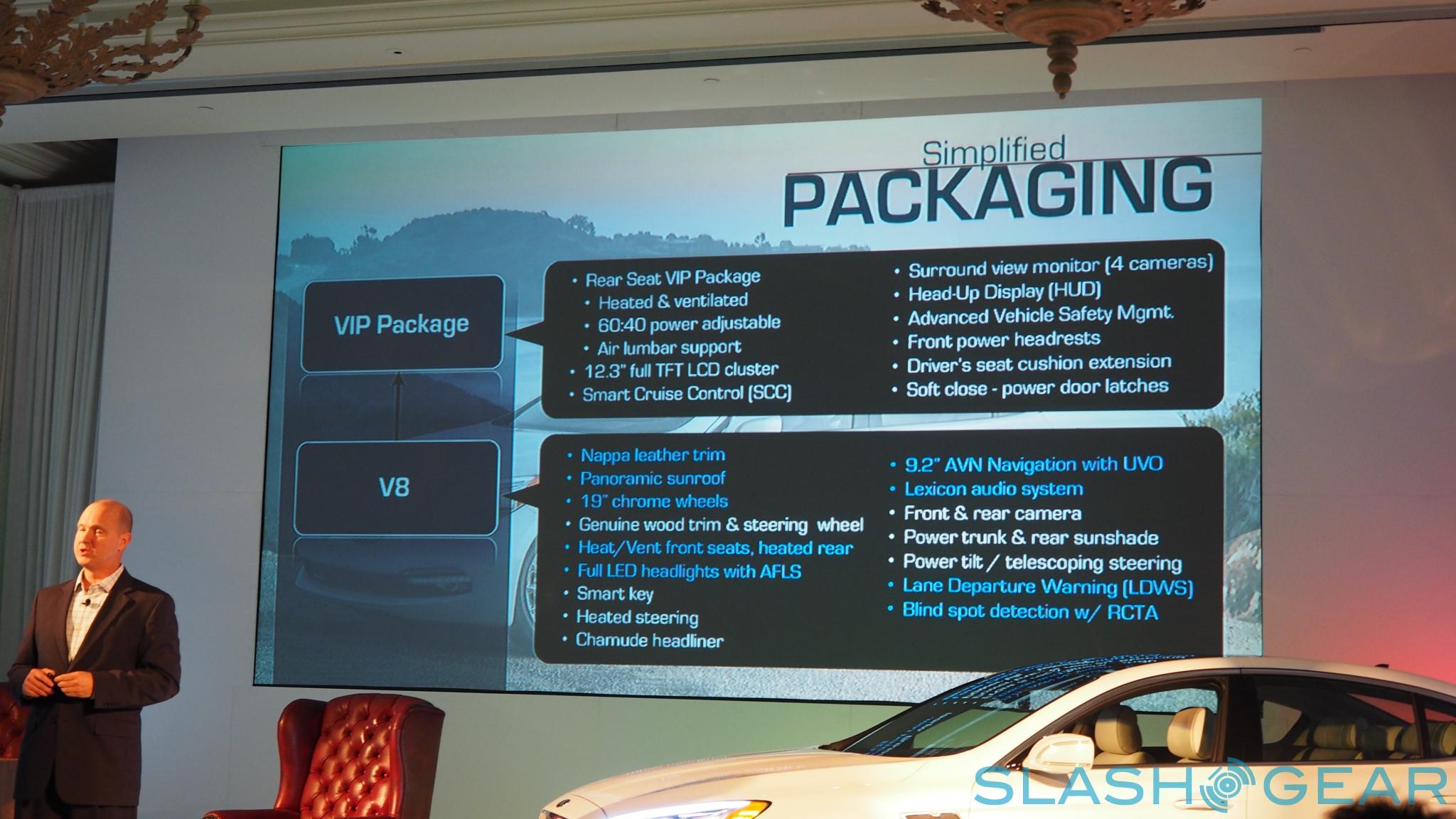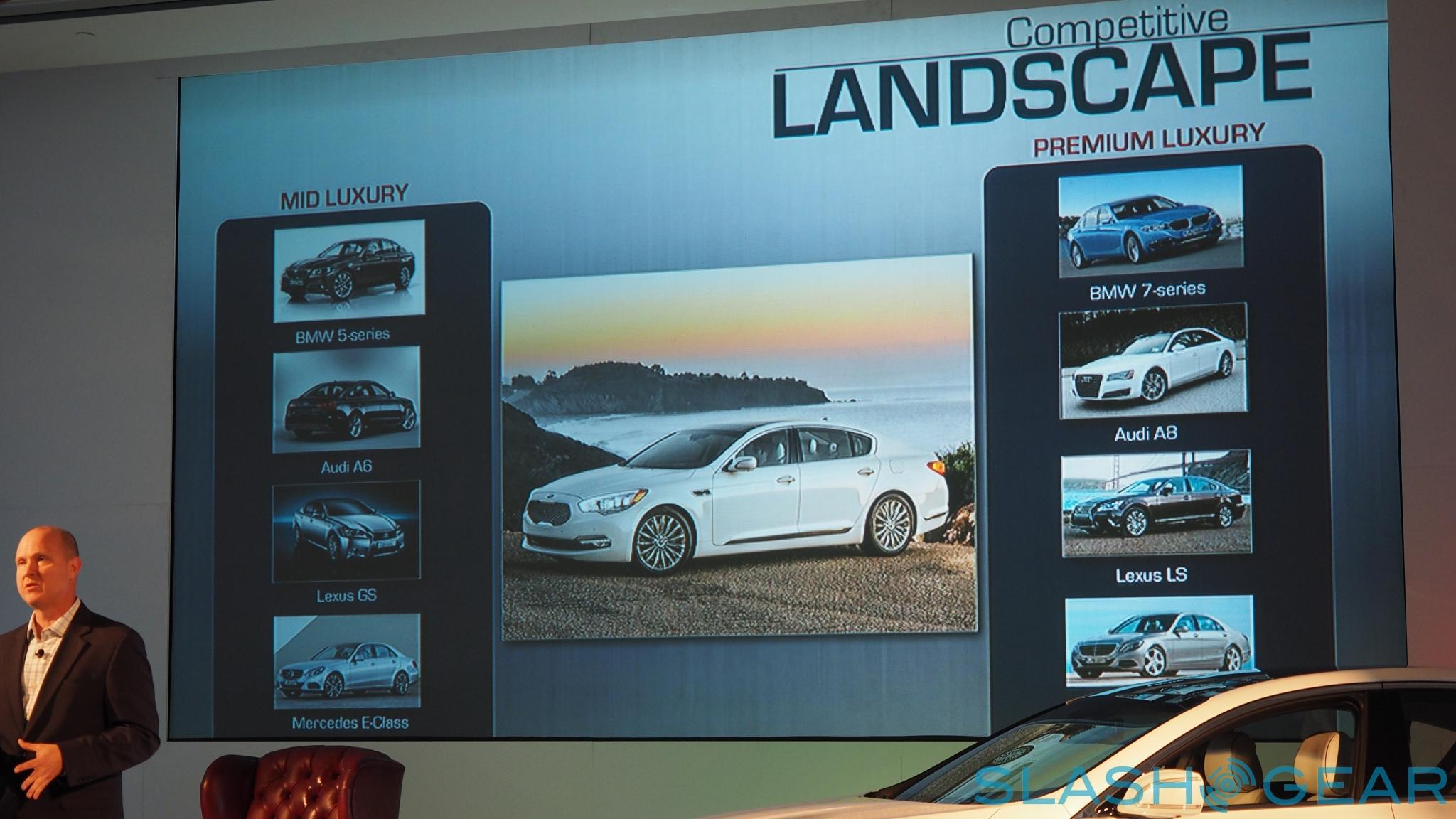2015 Kia K900 First-drive
You can't accuse Kia of not setting itself ambitious challenges, and the 2015 K900 is unquestionably its most provocative play in the US so far. A full-size, rear-wheel-drive luxury sedan, the new K900 is Kia's play for the high-end market dominated by BMW, Mercedes-Benz, Audi, and Lexus. Buyers of those brands have great expectations, however; SlashGear got behind the wheel to see if the K900 can play with the big boys.
Design
Designing a high-end sedan is a difficult balance. On the one hand, it can act as a statement aesthetic for your marque, and it needs to be distinctive enough to communicate that branding among rivals in the parking garage. On the other, buyers with the cash to play in this segment can be conservative and discerning, and generally don't react well to gimmicks.
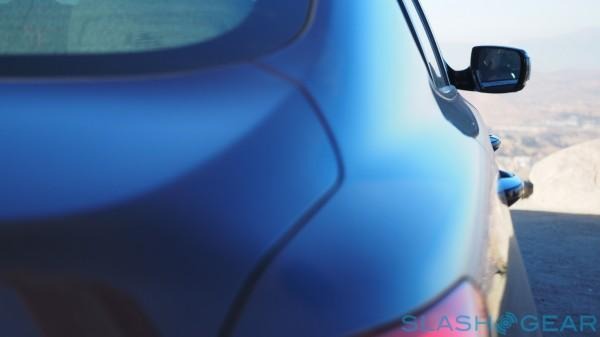
Kia's approach has been to distill some of the eye-catching aspects of its more affordable models, like the angular grille of the Cadenza and the expressive headlamp shape of the Forte, and embed them into a larger, more solid looking car. It's certainly not small, roughly the same length and wheelbase as BMW's 7 Series, though Mercedes' S-Class is bigger in both respects.
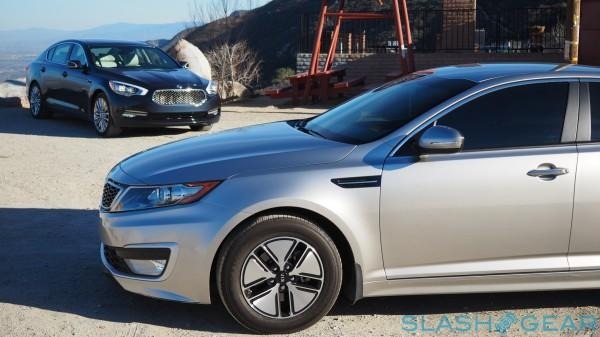
It's a very color-dependent car. In white, you lose a lot of the visual detailing, like the chrome trim around grille and glass, which provide a better contrast on darker paint colors. We like the overall proportions, though side-on there's a little heaviness perhaps around the C-pillar, and we're not entirely convinced by the Buick-esque vents just ahead of the front doors.
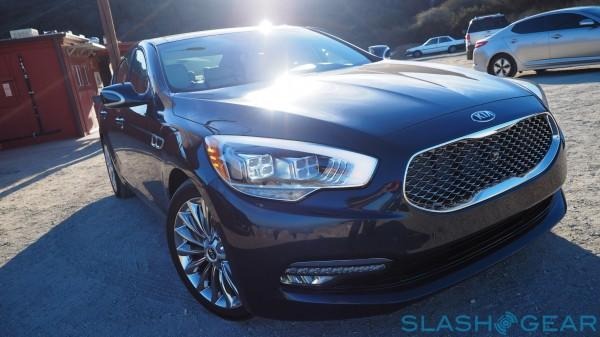
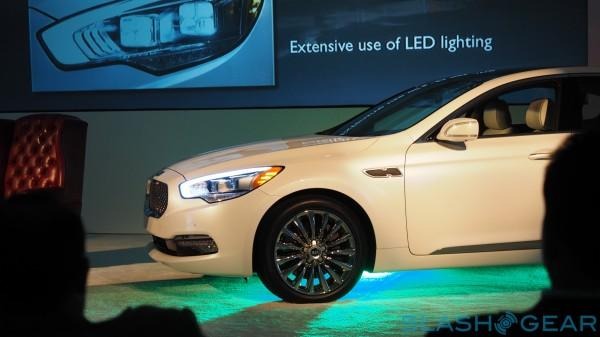
Still, the multi-spoke 19-inch alloy wheels are eye-catching with their chromed finish, and the LED active headlamps – that can adjust their projection according to speed and steering – both look great and are functionality beneficial too. The doors have a satisfying heft to them – they'll help shut themselves if you tick the VIP package, too – and the wide trunk opening gets you access to 15.9 cu.ft. of cargo space; again, more than BMW manages but less than Mercedes provides.
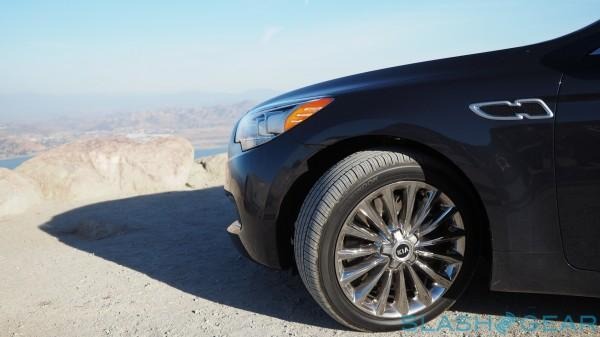
While the S-Class and the 7 Series have well-established silhouettes, the K900 fares particularly well against other luxury upstarts like Hyundai's Equus. The styling feels fresher than its Korean sibling – much of the K900 under the metal is shared with the Hyundai – better straddling the line between striking and solid.
Engine and Performance
Kia has a single engine option on offer for the K900 initially, a 5.0-liter V8 with 420 HP and 376 lb-ft of torque. That's fed through ZF's 8-speed automatic gearbox to the rear wheels; Kia has no current plans for an all-wheel-drive version of the car.
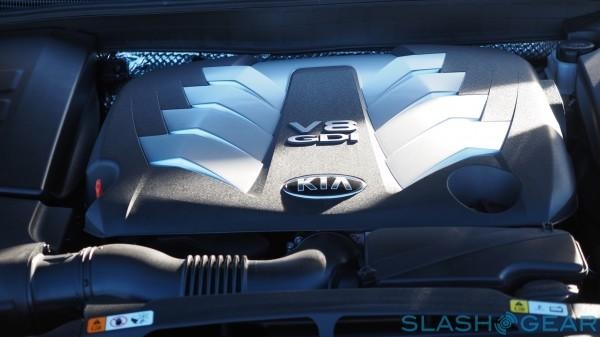
The engine isn't new – it's been used before in the Equus, for instance – but Kia has massaged it into greater smoothness for the K900. There are no pretensions that this is a sports sedan: the K900 is aiming resolutely at comfort, and the V8 delivers on that in spades, with more than enough power to get you up to highway speed and beyond, without any jerks or fuss along the way.
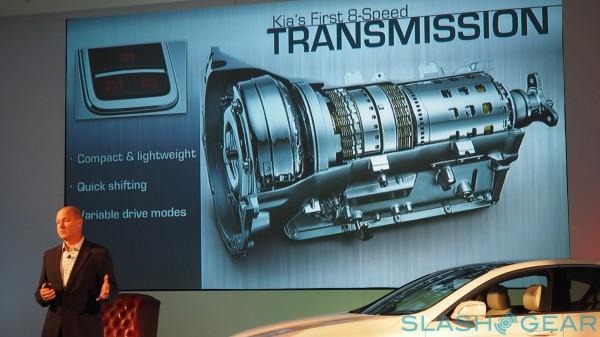
On the road, it's a stable and sure-footed affair, though not one which encourages aggressive driving. The multilink suspension system stops short of the air suspension some rivals use, but leaves the K900 capable of soaking up even obstinately bumpy and rutted roads, while stabbing at the gas pedal shows there's more than enough power for overtaking.
There's a clearly communicated preference for more ambling cornering, with the K900 feeling secure in turns but definitely not built for drivers who have semi-rallying ambitions for their luxury sedan. The electric steering is tuned on the lighter side, too, but the brakes don't hold back in bringing the 4.5+ ton car to a halt.
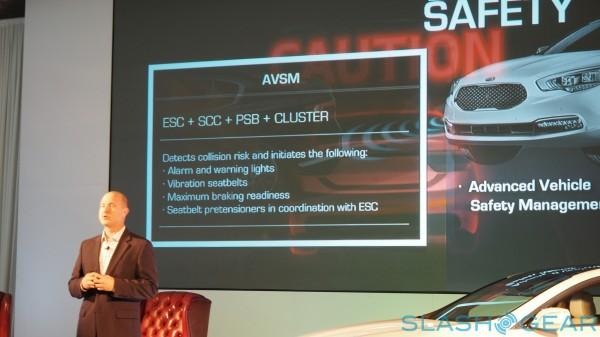
After the 5.0 V8 launches the K900 this spring, Kia will then begin offering a second, smaller engine option. That 3.6-liter V6 will trim the price as well as power – down to 311 HP – effectively pitching the K900 against smaller cars like the E-Class and 5 Series.
Interior
Setting out your stall as the epitome of luxury is no bad thing, but it does mean Kia has to hit it out the park with its interior accommodations if it wants the K900 to be taken seriously. For the most part, it does: the company may be more familiar with making affordable low- and mid-range cars, but its shown a surprising degree of aptitude for cranking up the luxe credentials.
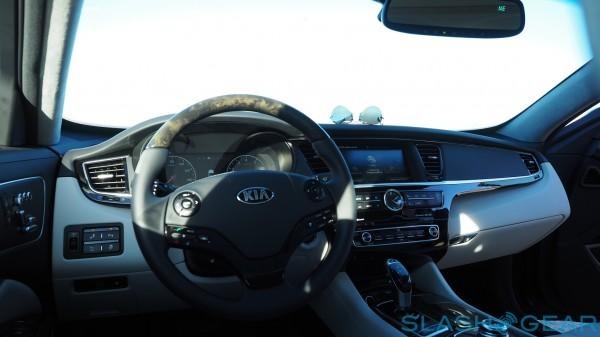
Up front, the dashboard is dominated with two large displays: a 12.3-inch LCD for the driver instrument cluster, allowing the K900 to switch between "regular" and "sport" modes with different dial styles along with adding in navigation instructions and other infotainment alerts, and a 9.2-inch display in the center stack. The latter unfortunately isn't touch-enabled, but is instead linked up to a navigation knob down by the gearshift, Audi MMI-style.
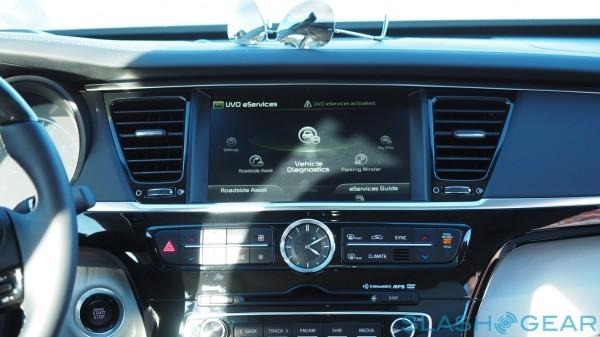
There's no shortage of buttons, with the steering wheel sprayed with keys for navigating through the binnacle display, along with controlling multimedia, voice command, and phone calls. The HVAC keys run across the center, with a second row of buttons for multimedia, and then there are more buttons again spread around the navigation knob.
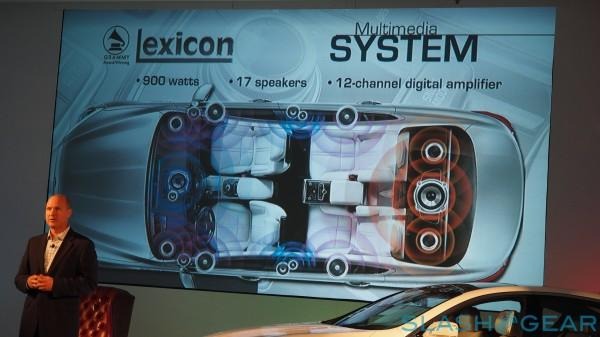
For the most part, it all feels sturdy and high-quality, certainly in the places you'll be touching most often. One conspicuous exception to that is the navigation knob, which lacks the heft similar controls in rival cars supply; that's a shame as it's how you interact with most of the K900's toys, like the standard SiriusXM, 900W surround-sound 17-speaker audio system, parking assist, and Bluetooth hands-free/streaming.
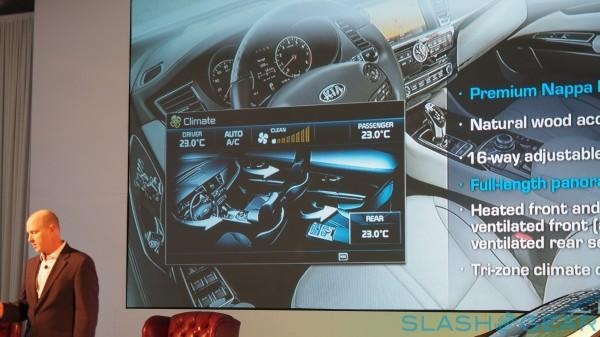
Options include Surround View Monitor, which gives a virtual bird's-eye view of the space around the car for easier parking, and radar-controlled smart cruise control that can automatically pilot the K900 in line with other traffic.
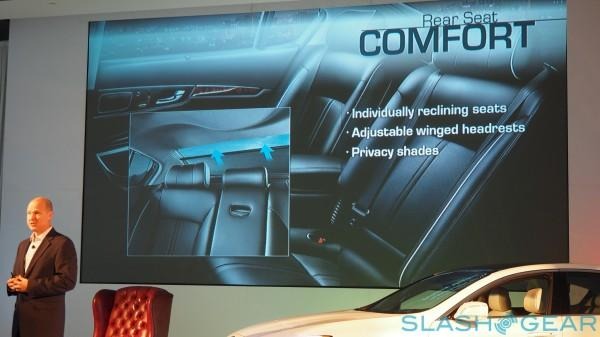
Leather is of course standard, soft to the touch and the front seats themselves comfortable and well-supporting. Both have power-adjustment out of the gate, though Kia also offers more motors if you tick the right boxes on the spec-sheet. They're also heated and ventilated as standard, too; the rear seats are heated as standard.
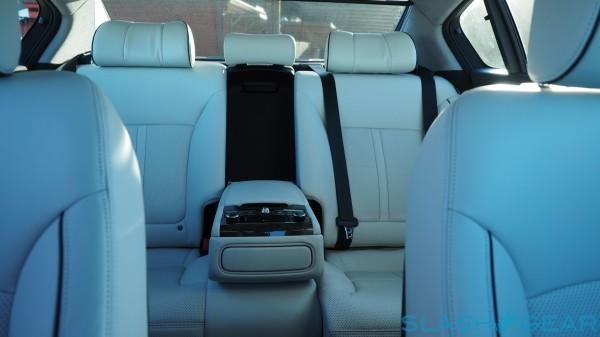
Things get most interesting, however, when you sign up for the VIP Package, a $6,000 premium that scales up accommodations for both those in the front and the back. As well as the surround camera view, the driver gets a more comprehensive binnacle display and a head-up display, that can project speed, lane warnings, navigation, and other information onto the windshield, which works very well.
However, it's in the back that the VIP Package has the main impact. As well as adding ventilation to the seats, they also get massage and power-recline which, combined with the huge 38+ inches of rear legroom, make for a limo-style experience that sits very well with the K900's smooth, leisurely driving style. You also get a decent number of buttons to play with, with controls in the center armrest for the twin-zone rear air conditioning and motorized rear shade, among other things.
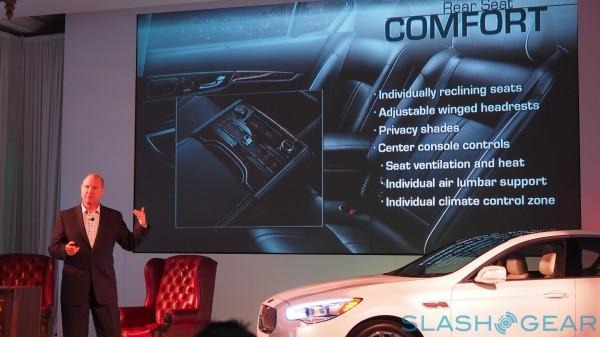
It's also an impressively quiet car. Kia has used things like laminated glass, cladding on the underbelly, and more insulation than would be normal to deliver a sense of hush for passengers even at above-highway rates. That means you don't really get any sort of V8 rumble from the engine, but it wasn't something we missed in what's one of the quietest cabins we've sat in.
Wrap-Up
With a starting price of $59,500, you can look at the K900 in two ways. The less generous might blanch at spending that sort of money for a Kia; those who have been following the luxury car segment for any length of time will know that the K900 is offering an astonishing amount for the money. An S-Class starts at more than $92k; BMW wants $74k for its entry-level 7 Series, but figure on over $83k if you want to match the Kia's engine in size. Even Lexus, itself once the plucky upstart, kicks things off at more than $72k for the LS 460.
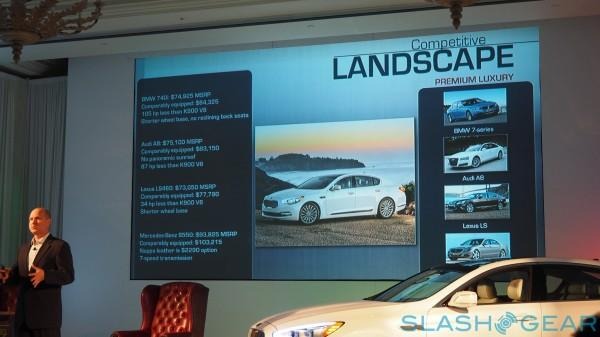
Factor in the higher standard spec-levels of the K900, and – for those willing to look past badge and brand – the Kia makes no small amount of sense. The Equus is, unsurprisingly, a more comparably-priced car, but we prefer the K900's more modern looks, quieter cabin, and more luxurious VIP Package.
Kia's ambitions for the K900 are both conservative and high. The company doesn't expect to claw tens of thousands of sales from its German (and Japanese) rivals; targets haven't been officially detailed, but there's a sense that if Kia can coax a few thousand US buyers out of their Lexus, Cadillac, and other marques, it'll consider the K900 a success. Equally, though, the K900 is Kia's new halo car, one which it's hoping will help cast a roseate glow over the rest of its range, and demonstrate it can do more than make low-cost vehicles.
For many, the badge reputation is an inherent part of luxury car ownership. Kia, however, is counting on there being at least some in the market for luxe without pretension, and for whom value comes predominantly from on-road abilities rather than on-drive cachet. As the first step toward brand reinvention, the K900 is a surprisingly impressive attempt.
